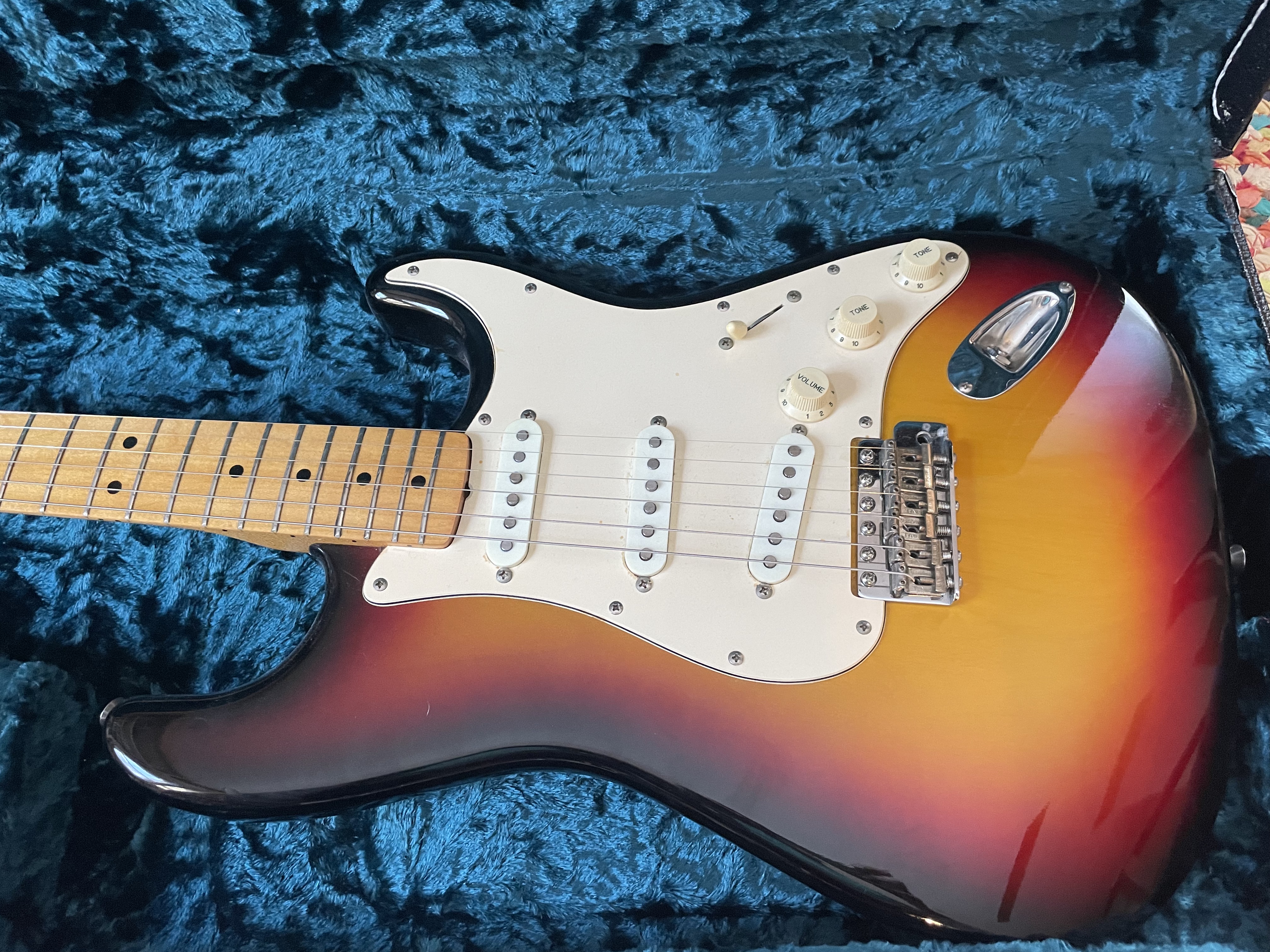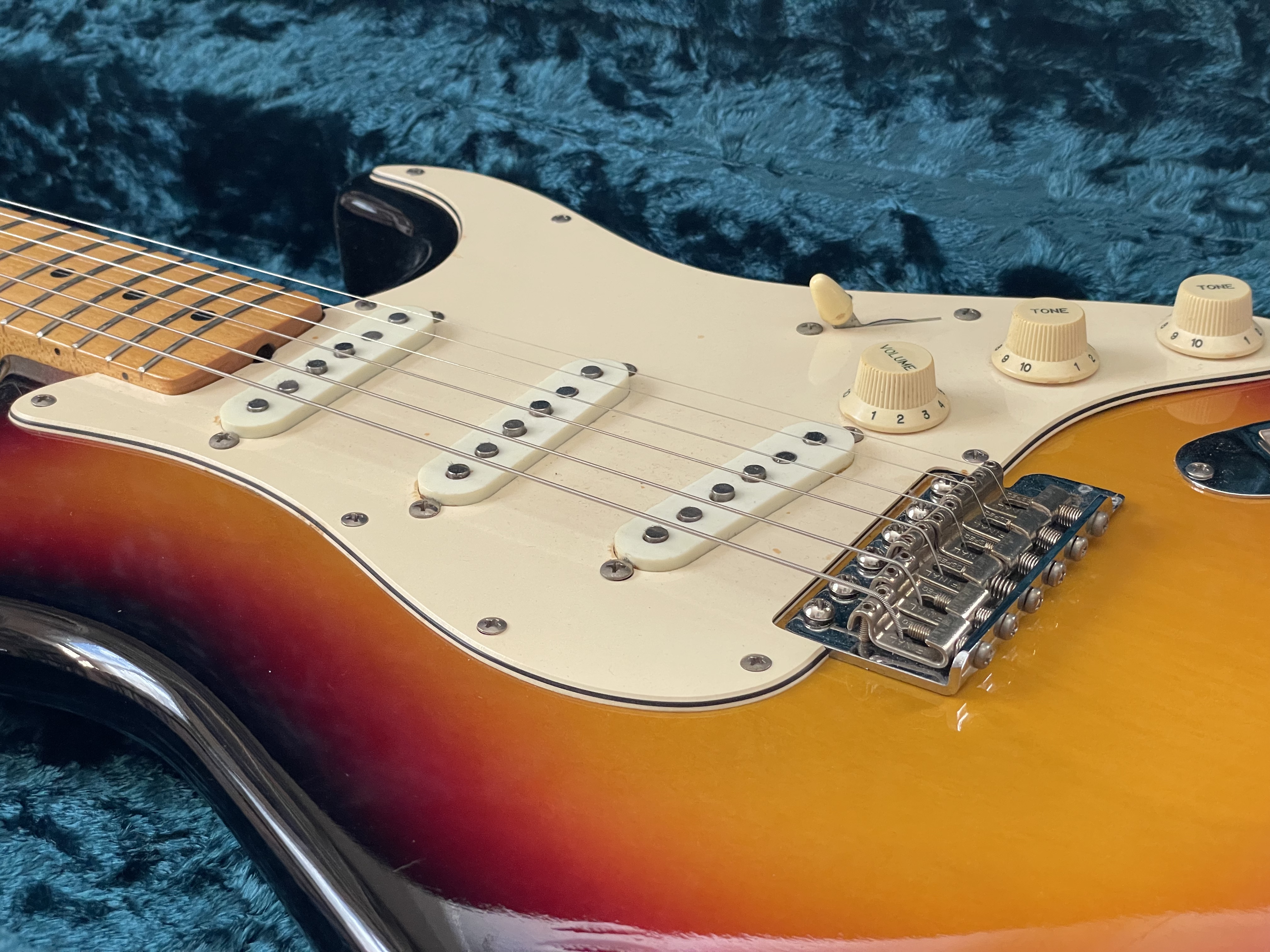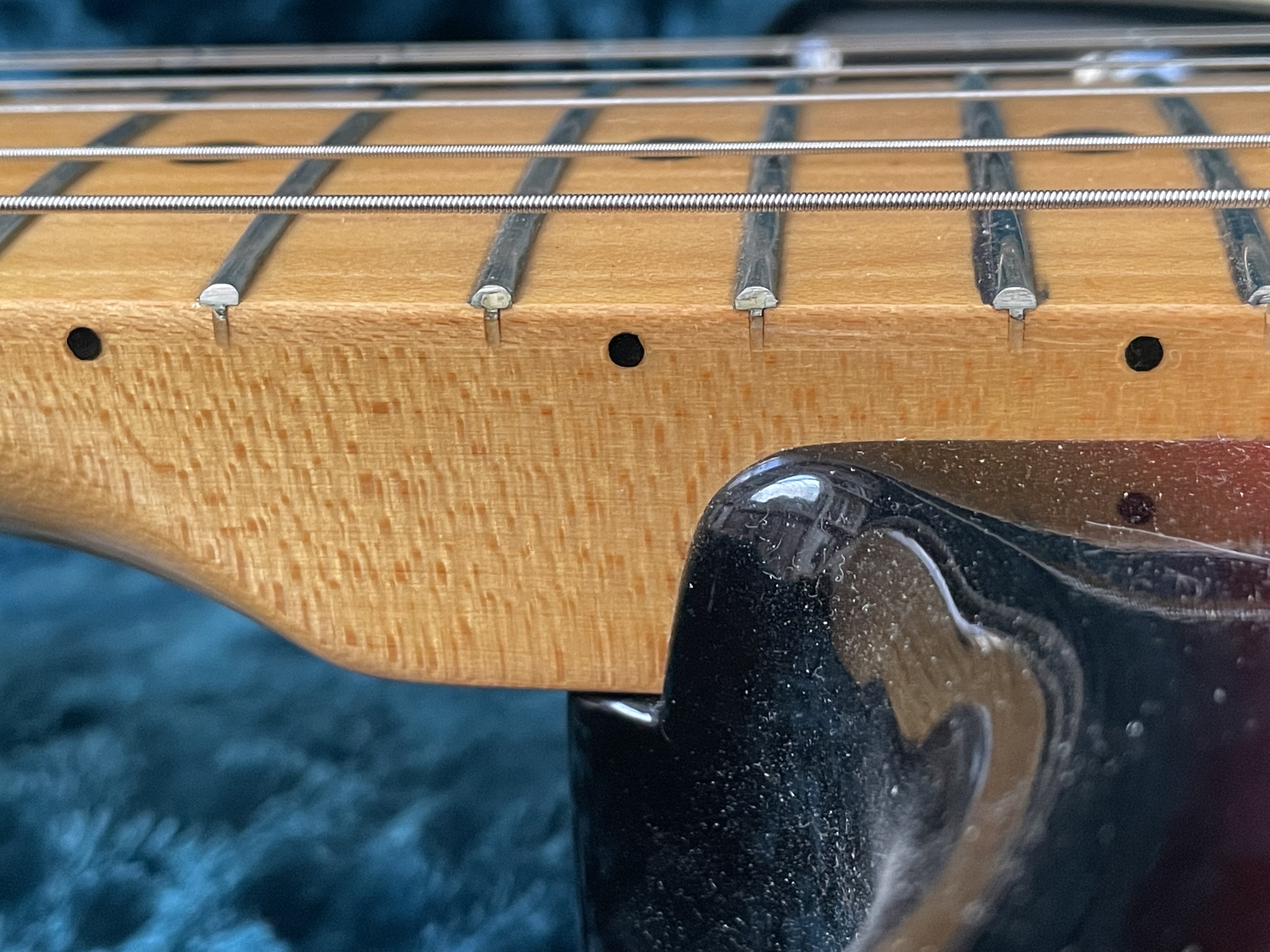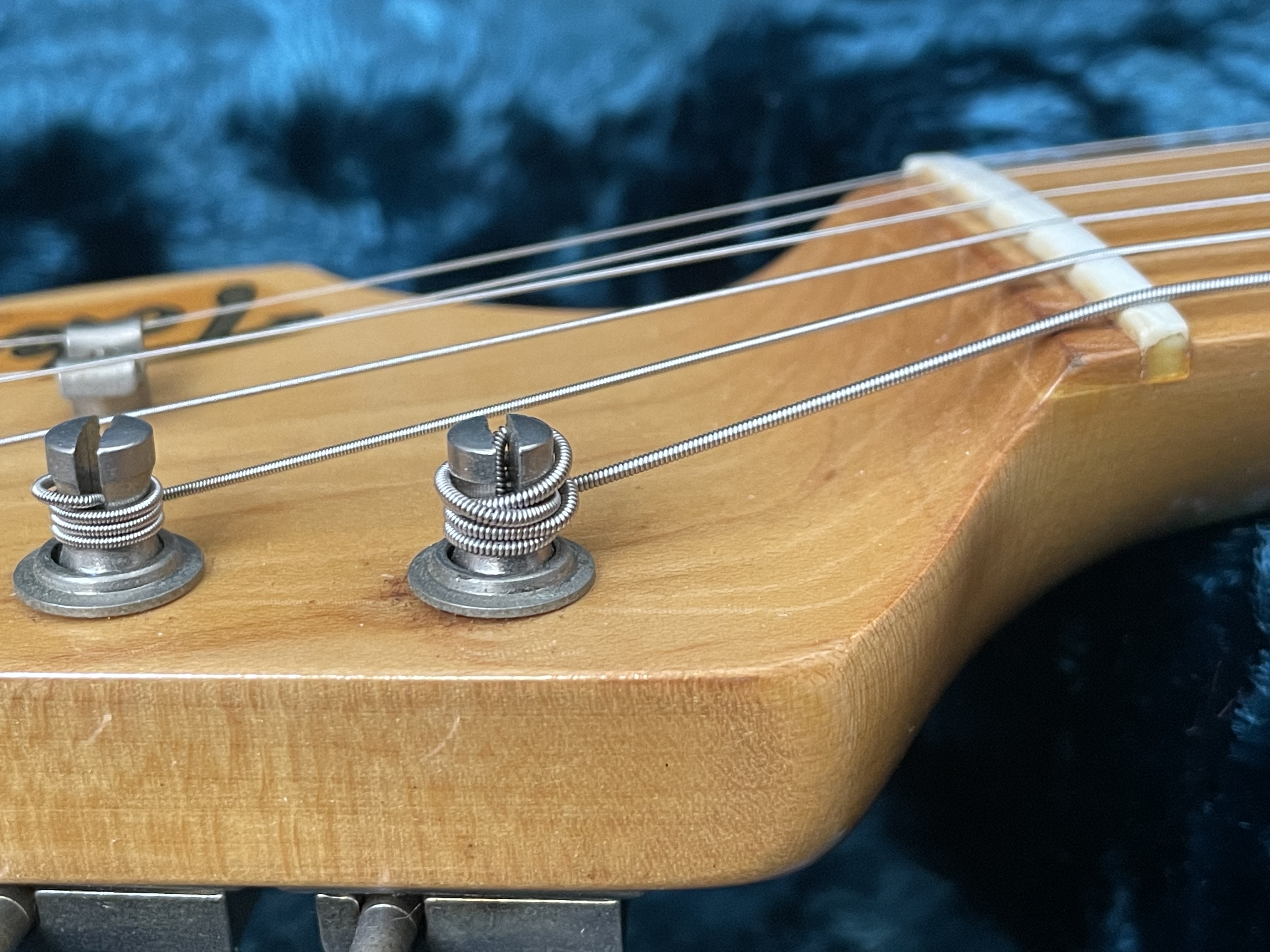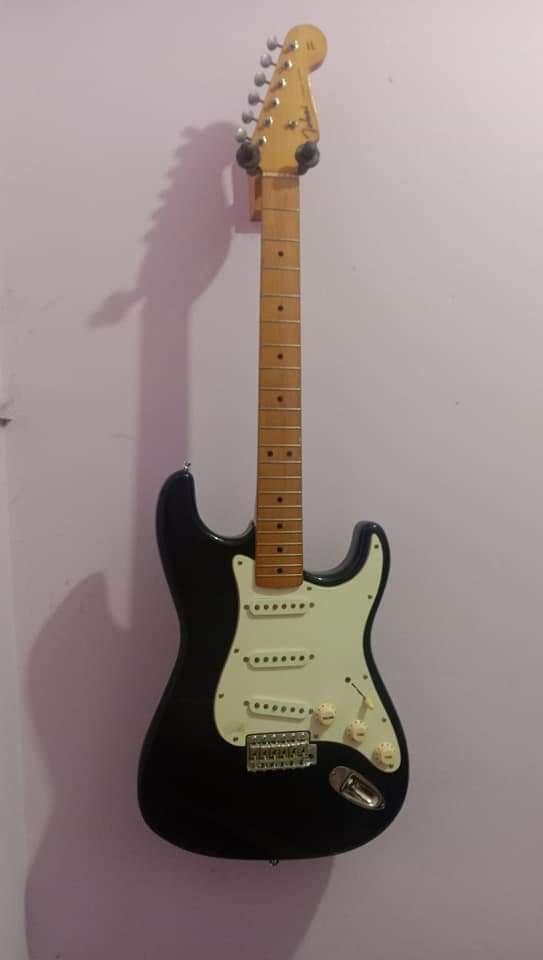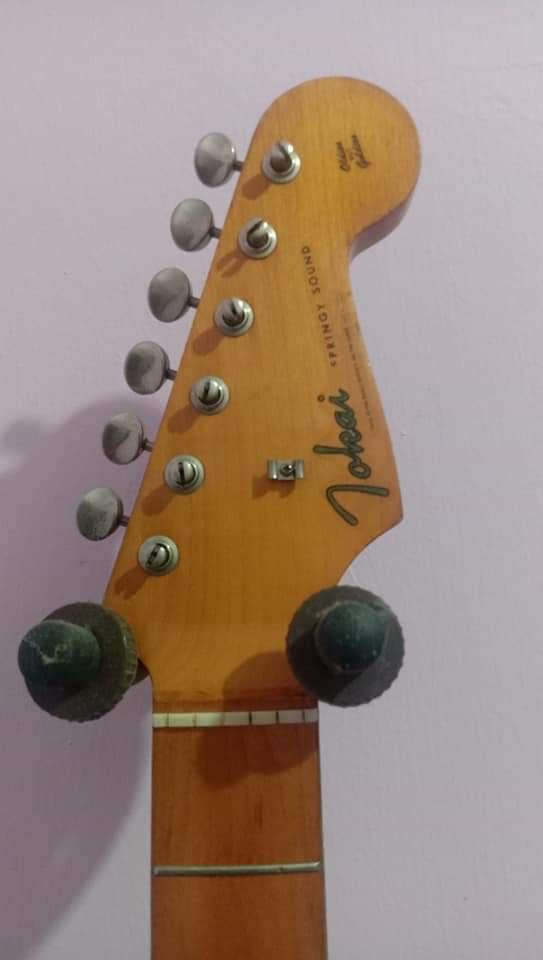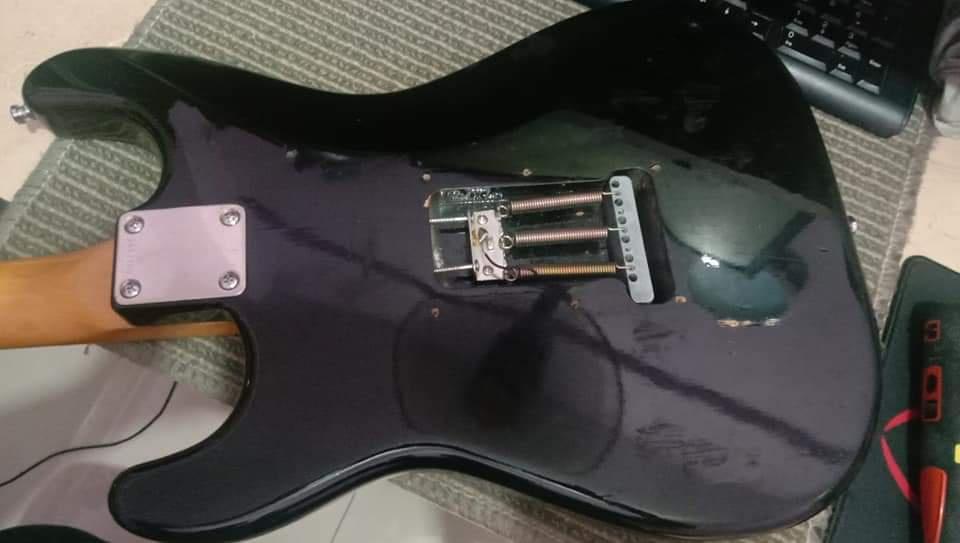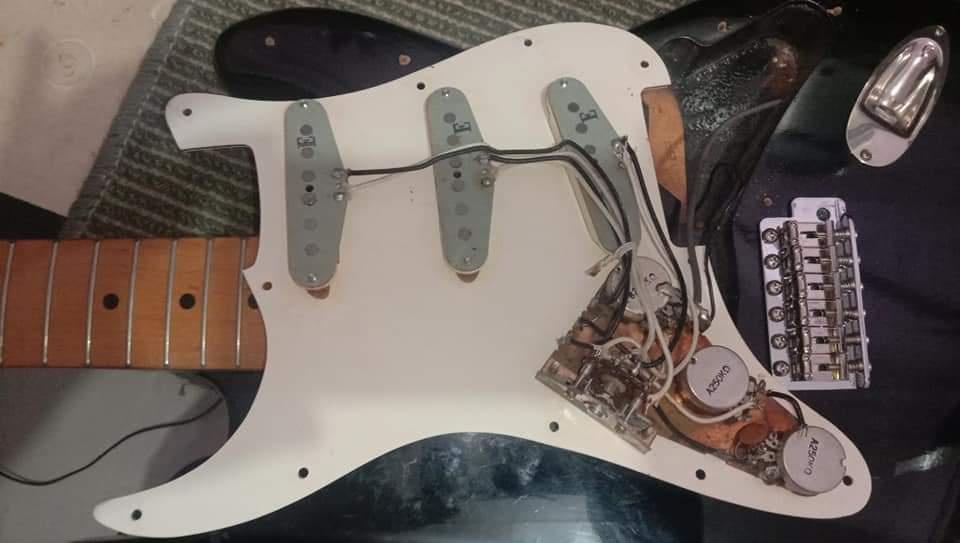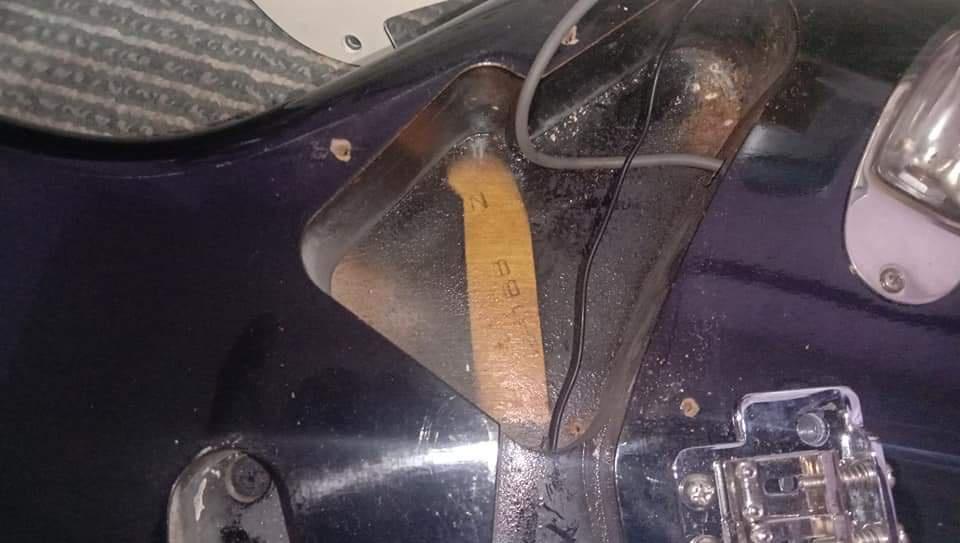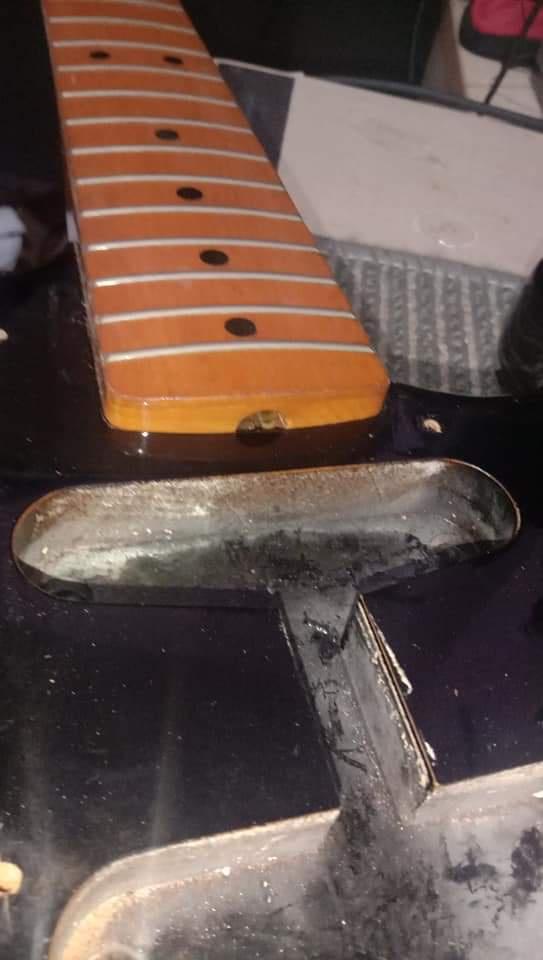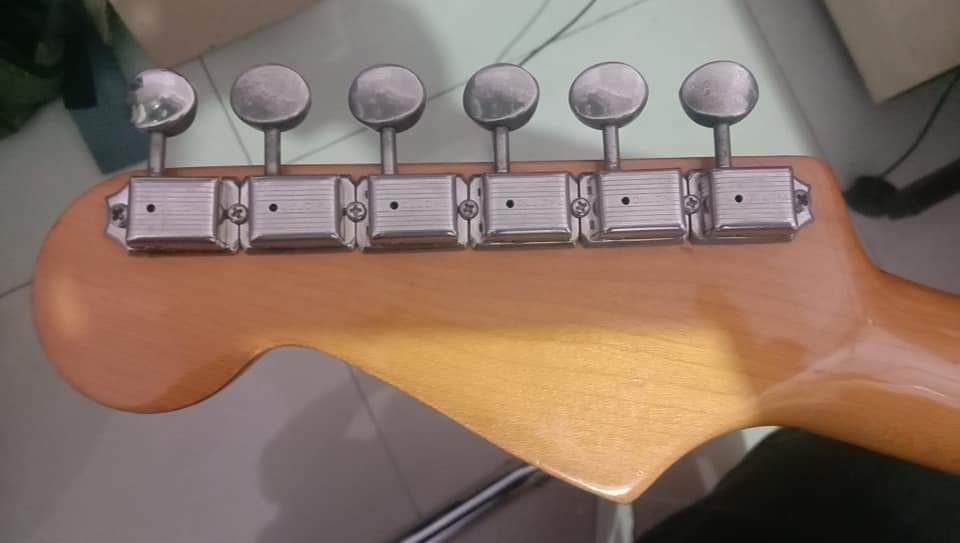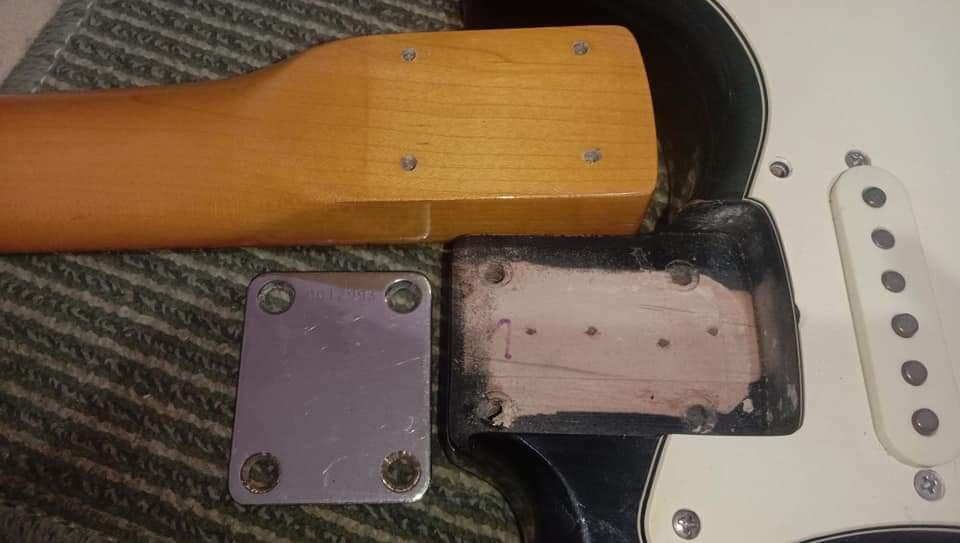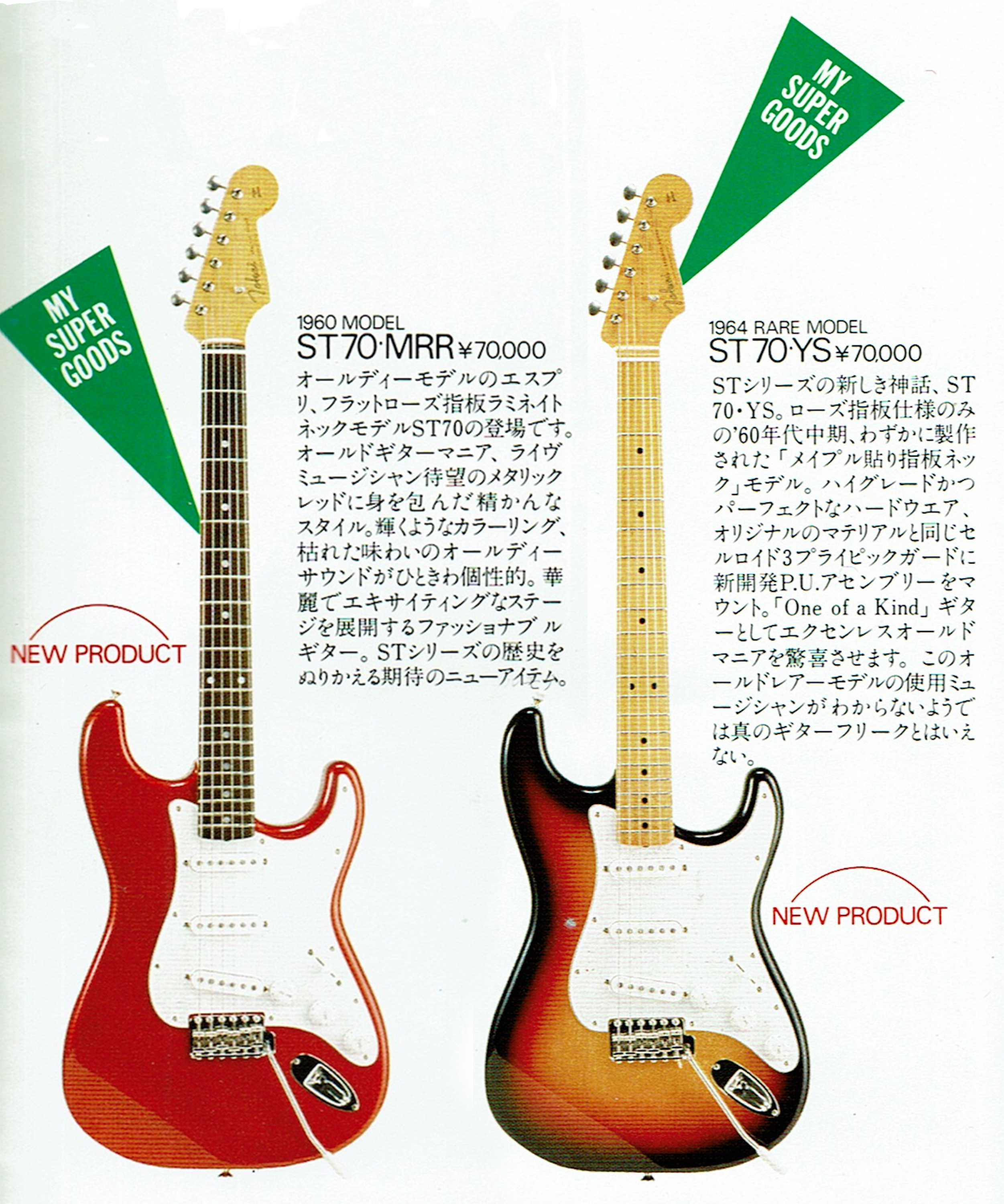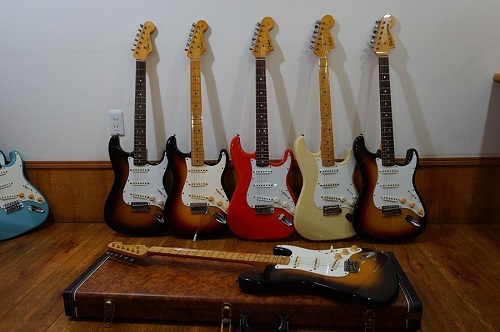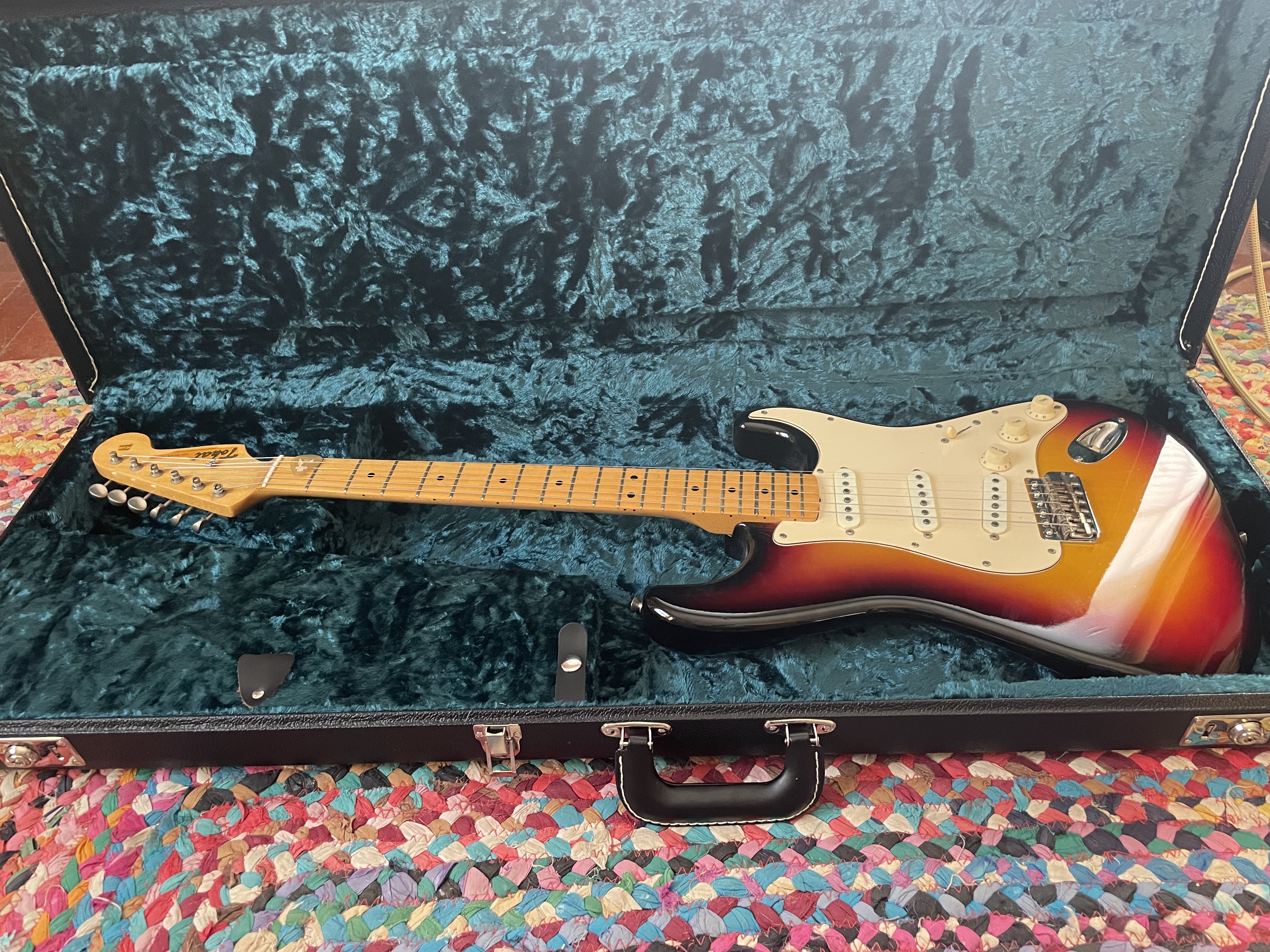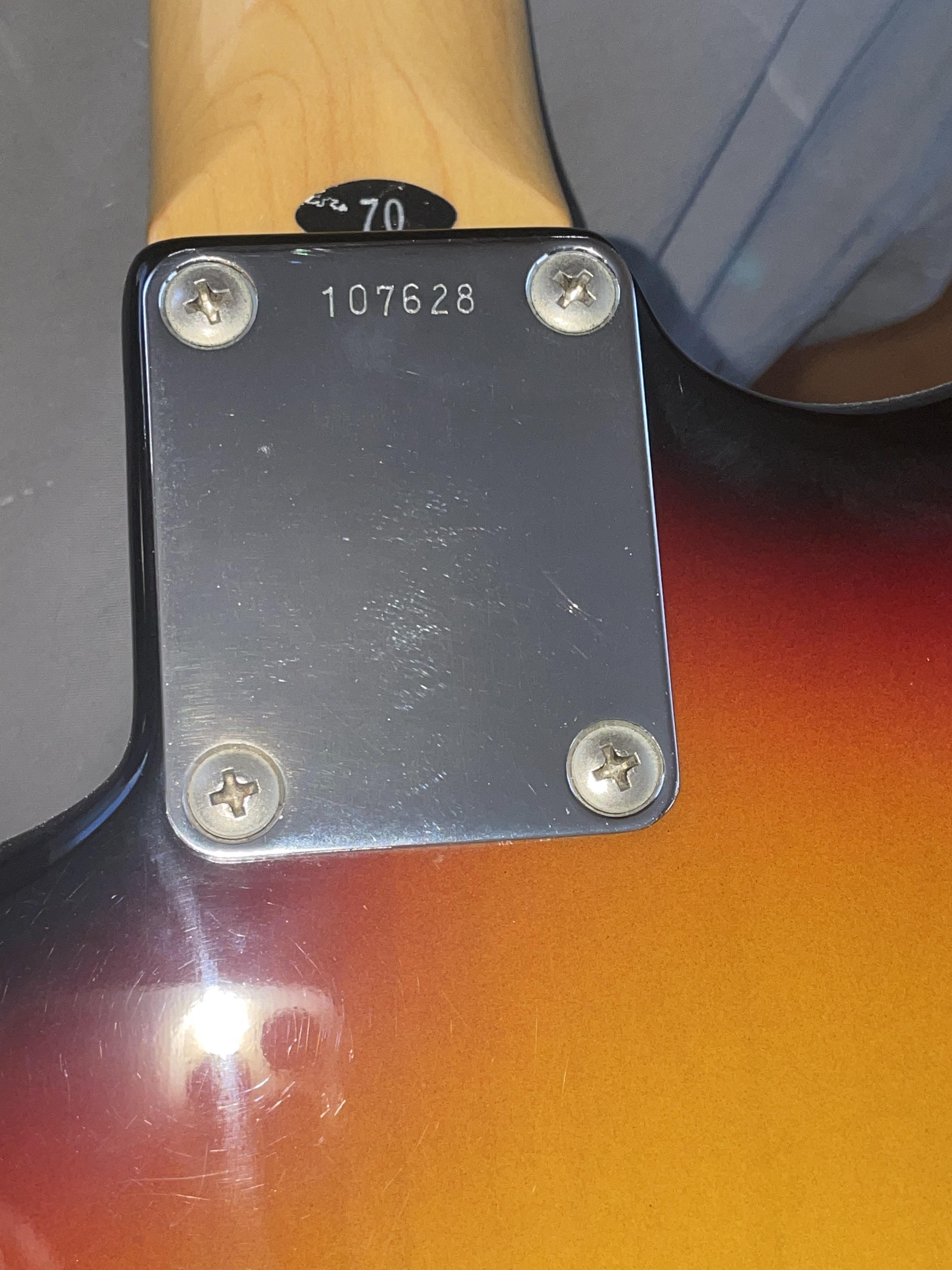You are using an out of date browser. It may not display this or other websites correctly.
You should upgrade or use an alternative browser.
You should upgrade or use an alternative browser.
ST70 "Rare Model"
- Thread starter Sigmania
- Start date

Help Support Tokai Forum:
This site may earn a commission from merchant affiliate
links, including eBay, Amazon, and others.
I just spotted what is apparently a gold metallic ST70R (1960 model) in the Spring 1982 catalog.
1. 1958/1960/1964 MODEL. ° The 1960s was an era when various colors existed. Tokai is also a special color series. From the left, 3 models of '58 / CR, '60 / GM, and '64 / SO.
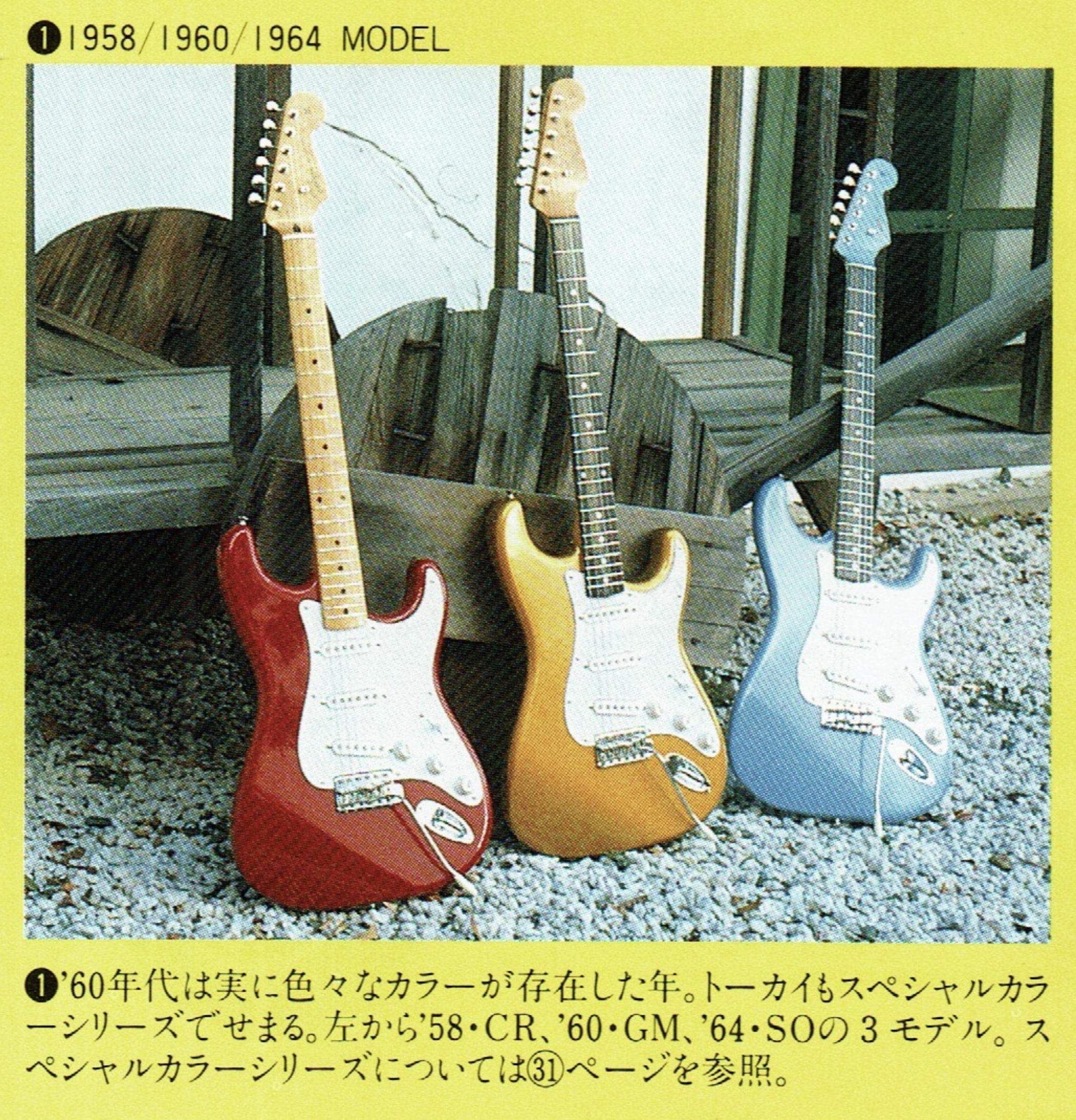
1. 1958/1960/1964 MODEL. ° The 1960s was an era when various colors existed. Tokai is also a special color series. From the left, 3 models of '58 / CR, '60 / GM, and '64 / SO.

Is this unusual? A TE70 that appears to have a maple lam board and no skunk stripe?
Listing says it was made in 1983, but it seems to have the wrong neckplate. Plate says serial number is L240456. That is traditionally for a rosewood board neck.
Tokai Breezysound TE70 PR Paisley 1983 #J91
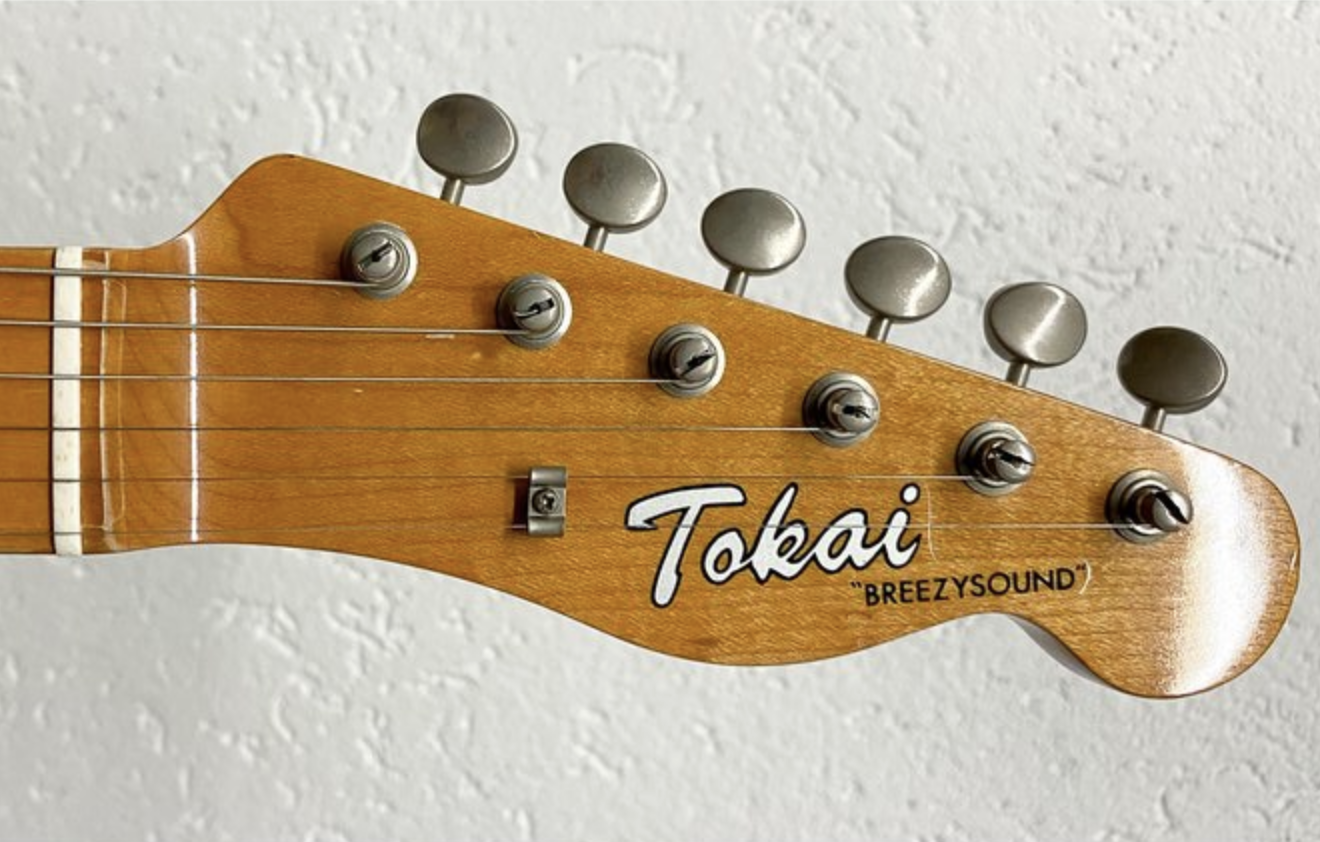
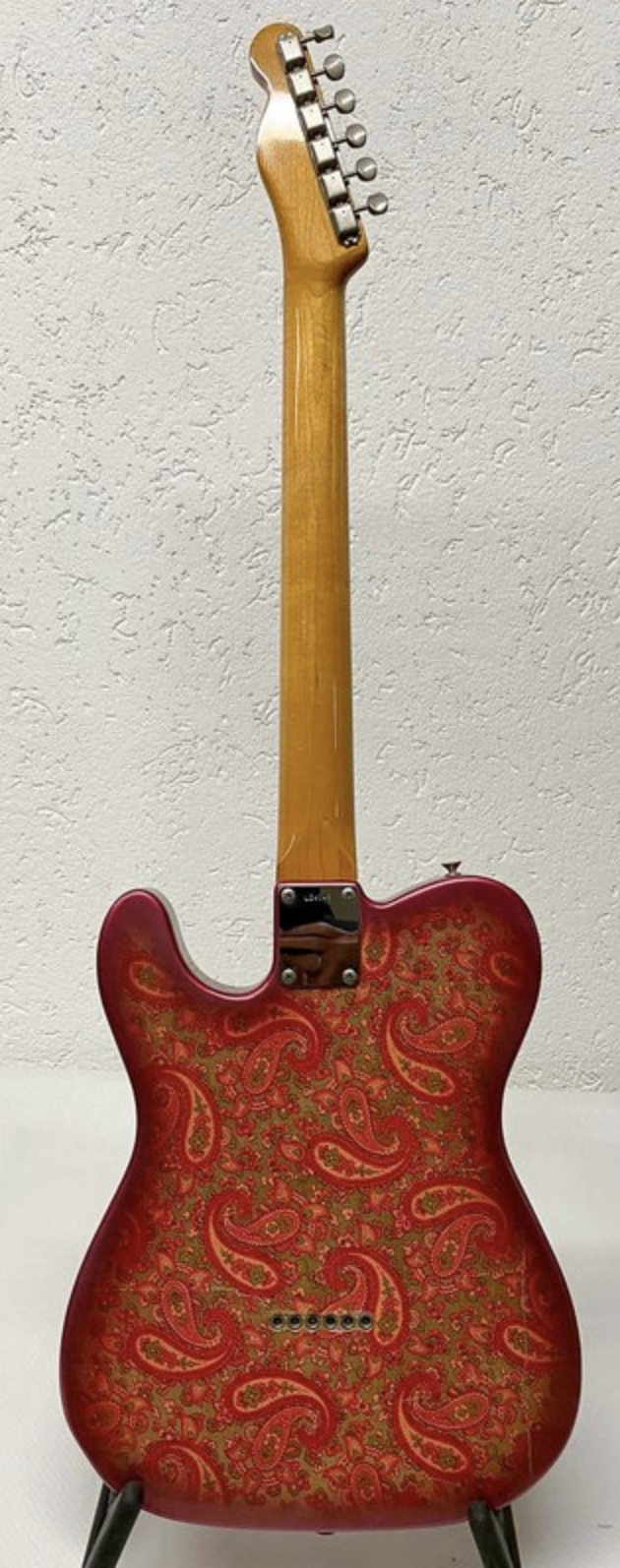
Listing says it was made in 1983, but it seems to have the wrong neckplate. Plate says serial number is L240456. That is traditionally for a rosewood board neck.
Tokai Breezysound TE70 PR Paisley 1983 #J91


Last edited:
mdvineng
Well-known member
I think it's a 67 replica with the lam maple board and no skunk.
I was focusing on the fretboard. I guess I never paid much attention to the paisley Fenders.
Very cool to link the maple lam with the paisley feel of the summer of love, Haight Ashbury, etc. that was happening at the time.
Here’s an original from 1968. Not sure if the paisley version came in in 1967 or 1968?
Didn’t realize the originals had a foil wallpaper like surface. Weird.
https://reverb.com/item/52976578-fe...are&utm_campaign=listing&utm_content=52976578
Very cool to link the maple lam with the paisley feel of the summer of love, Haight Ashbury, etc. that was happening at the time.
Here’s an original from 1968. Not sure if the paisley version came in in 1967 or 1968?
Didn’t realize the originals had a foil wallpaper like surface. Weird.
https://reverb.com/item/52976578-fe...are&utm_campaign=listing&utm_content=52976578
mdvineng
Well-known member
Yep the wallpaper finish reminds me of my sister doing the same to her school books 
67 was for the neck style
67 was for the neck style
The trends are fascinating to me. Especially neck construction highlighted in this thread and the ST70 model.
Timeline of sorts
1954–1959, one piece maple necks C,D,U & V profiles
1959–1962, Brazilian rosewood "slab" fretboard
1962–1966, Brazilian rosewood thin veneer fretboard
1964-1965 "Maple cap" thin veneer on pre CBS era small headstock Strats
1965 CBS era big headstock (December 1965)
1966 CBS era rare "bound" fretboard
1966–1969, Indian rosewood thin veneer, or "maple cap" on big head CBS era Strats
I don't know of any bound fretboards on Springys or Goldstars. One popped up on a Greco in the other thread by Voidoid56, so it made me curious. That would be really wild if there were a Tokai with a bound fretbaord.
http://www.tokaiforum.com/viewtopic.php?p=198007#p198007
Timeline of sorts
1954–1959, one piece maple necks C,D,U & V profiles
1959–1962, Brazilian rosewood "slab" fretboard
1962–1966, Brazilian rosewood thin veneer fretboard
1964-1965 "Maple cap" thin veneer on pre CBS era small headstock Strats
1965 CBS era big headstock (December 1965)
1966 CBS era rare "bound" fretboard
1966–1969, Indian rosewood thin veneer, or "maple cap" on big head CBS era Strats
I don't know of any bound fretboards on Springys or Goldstars. One popped up on a Greco in the other thread by Voidoid56, so it made me curious. That would be really wild if there were a Tokai with a bound fretbaord.
http://www.tokaiforum.com/viewtopic.php?p=198007#p198007
This is a very rare guitar, but over $3,000???
Will be interesting to see what happens with it.
Three different production codes?? 7=2, 7=3 and 10=8....
https://www.ebay.com/itm/265738565...b_vTl8uRJe&var=&widget_ver=artemis&media=COPY
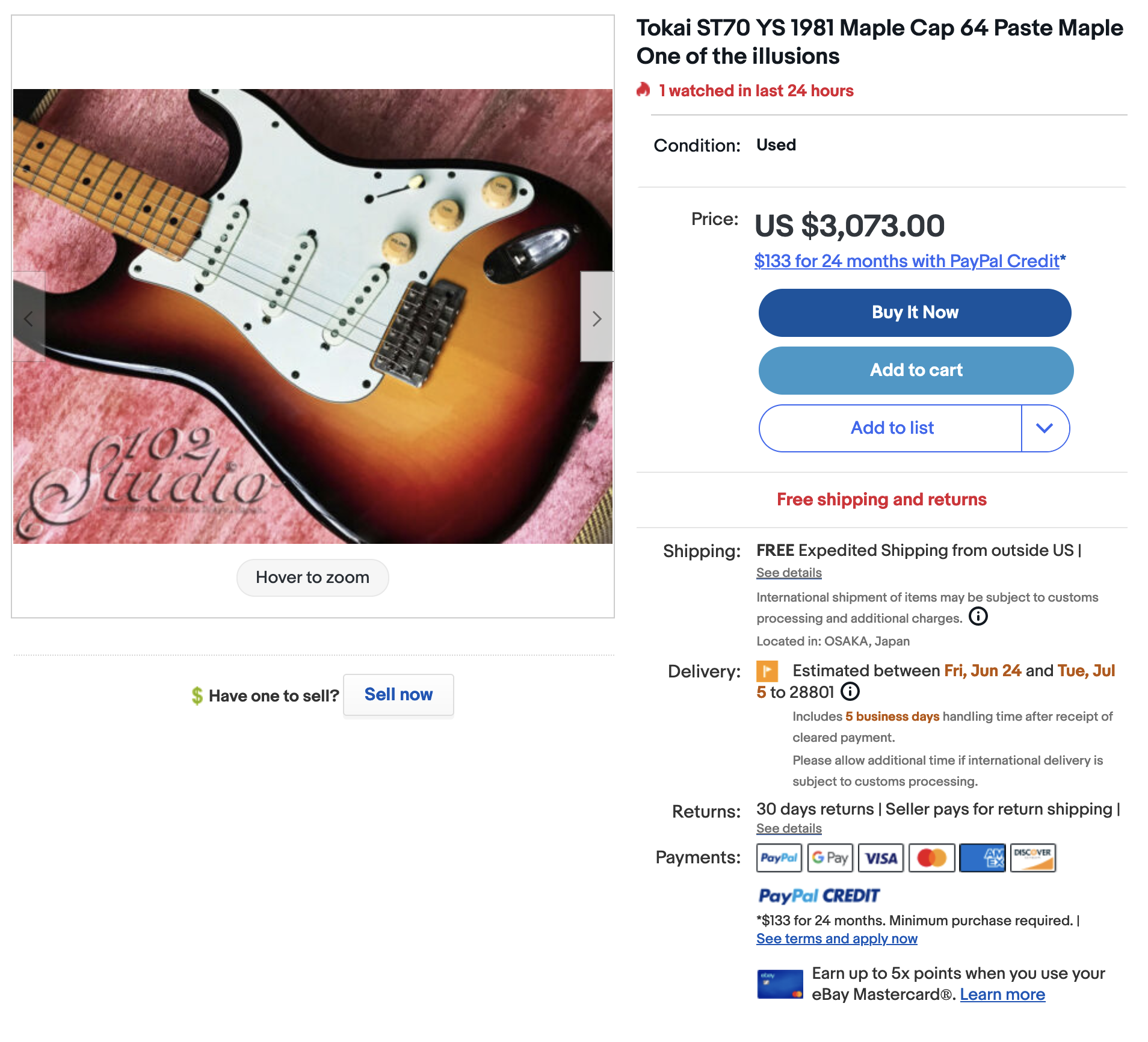
Tokai ST70 YS 1981 Maple Cap 64 Paste Maple One of the illusions
Description
Once every 10 years, one of the phantoms of the class has arrived in miraculous conditions!
The one in stock this time is ...
TOKAI 1981 ST70YS
As for the Spa Logo TOKAI period, only one year in 1982 is listed in the catalog, and many people may not know this existence.
Please note that it is not just a maple cap!
In vintage fenders, the pasted maple fingerboard, which is also famous as a Jimihen specification, existed as an optional setting in the mid to late 1960s, and the maple fingerboard is attached to the maple neck in the same way as the rose fingerboard is attached to the maple neck. Together, it is called a maple cap in the English-speaking world.
The maple 1-piece neck has a brown wood line that is less than 1 cm wide, which is a lid-like meaning after the truss rod is loaded from the back of the neck. It is a big feature to judge that there is no scank stripe because the rod is charged.
Even in the photo of the end of the fingerboard, you can see that the fingerboard with a thickness of about 6 to 7 mm is attached to the neck. See photo.
As mentioned above, this maple cap is a specification that is often seen in fenders after 1987, but it is extremely rare even in the pre-CBS period, and this product has a motif of an individual in 1964, in addition to the maple cap. The 64ST is reproduced by the sunburst, which is characterized by yellow color, the 11-point stop 3-ply pickguard, and the small head. To make it easier to understand, it's TAKANAKA's favorite machine!
Not only the motif individual, but also the famous strat book The Galaxy of Strats has a maple cap strat made in 1964, but there are very few strats of this specification in the Pre-CBS small head period, which is a ridiculous price now. It is a specification that is traded at.
Even the original Fender took 40 years to release this small head maple cap specification strat on CS, but in 1981 this project was released by Tokai-san. It's a miracle.
However, even if it is listed in the catalog, except for some popular models, let's mass-produce it before mass-ordering! There is no reason to take a high-risk method, and I think there is no doubt that it was basically small-quantity production and additional production while looking at the order back from the dealer.
However, sadly, there are not many people who could understand the wonderful condition of this specification in 1981, as you can see from the fact that even the original fender did not release the C S tiny lot limited release until the 2000s. It was an era when we had to be satisfied with a low-end model that was roughly similar to the one that wasn't there. You can see that the number of sales was very small.
Even if you have a chance to see it on the net very rarely, unfortunately if you look closely, the neck and body do not match, and when you open the pickguard, the xylem counterbore is fierce, etc. Remodeling of the 1980s The individual that remains as it was at the time of its release through the boom is the one that remains in its original state, regardless of the manufacturer's product, 40 years after its release. " Finding it is extremely difficult.
As for the one in stock this time, I didn't feel any excessive feeling of use, and it remained in this state! Extreme beauty condition of the level!
As a vintage gear 41 years ago, it is kept in a very clean state that can be said to be near mint, and although there are some minor wears that can only be found by holding your eyes over the light, first of all, in this condition You can think that it will not come out in the future.
Unless you are interested in a fairly detailed level, you can think of it as the image in the picture!
The neck condition is good, there is room for the remaining frets and rods, and the total instrument condition is outstanding, and the collector's release is valuable because the original condition was maintained. Weight 3.45 kg
In addition, with regard to this product, apart from its rarity, it takes a long time just to continue playing live without plugging in. In many cases, it is captured with a nuance that resonates loudly when it sounds strongly, and of course that is also perfect, but ...
As an example of an element that is difficult to understand just by listening to it, the sound of lightly plucking the 2nd and 3rd strings around the 7th to 12th frets may not usually bother you, but with this guitar, it was very long ago. It comes out and the volume is loud and I am surprised. I tend to listen to the high positive and low positive 1st to 3rd strings that approach with strong picking and choking, and chord playing, but I feel that this guitar is totally ridiculous.
Looking at the back of the neck, in addition to the fact that it is a hard hard maple mixed with fleck to the tip of the head, it appears in the sound more than it looks, and the acoustic sound is clear about the body, both the body and the neck. Great sound.
Of course, E-stamp PU is also good, but I think that this raw sound is what makes the amp sound.
In addition to using good materials from the beginning, seasoning over 40 years, and very important decades of good management, the sound created by all the elements, I play it. It's a guitar that you can really feel.
In addition to the fact that it was made in 1981, the year before the release in 1982, the paint is thin, and if this workmanship is taken into consideration, the possibility of a proto before the release cannot be denied.
If you have been looking for this product for a long time, it is a carefully selected individual that can be asserted that it is difficult to get the product with this quality in the future because it is a collector's release product, so please do not miss this timing!
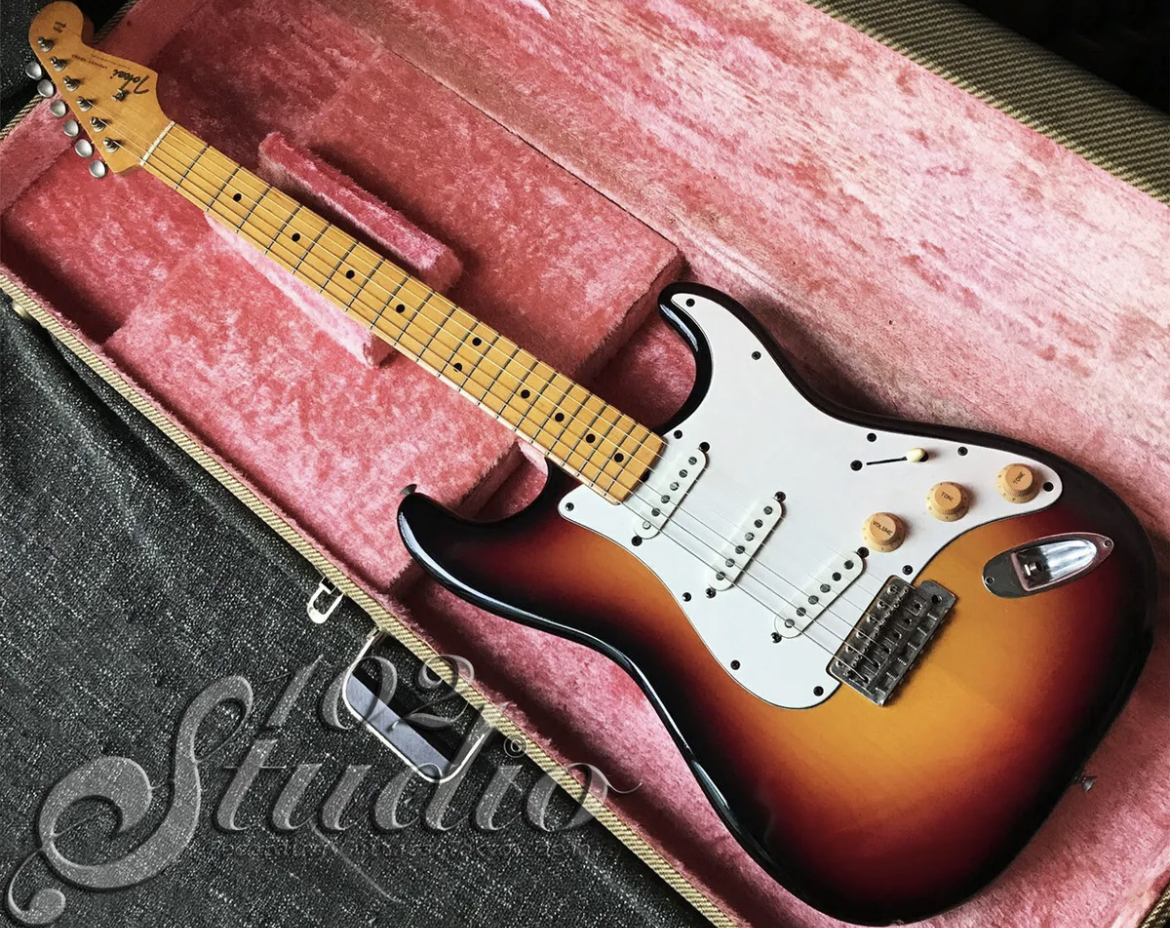
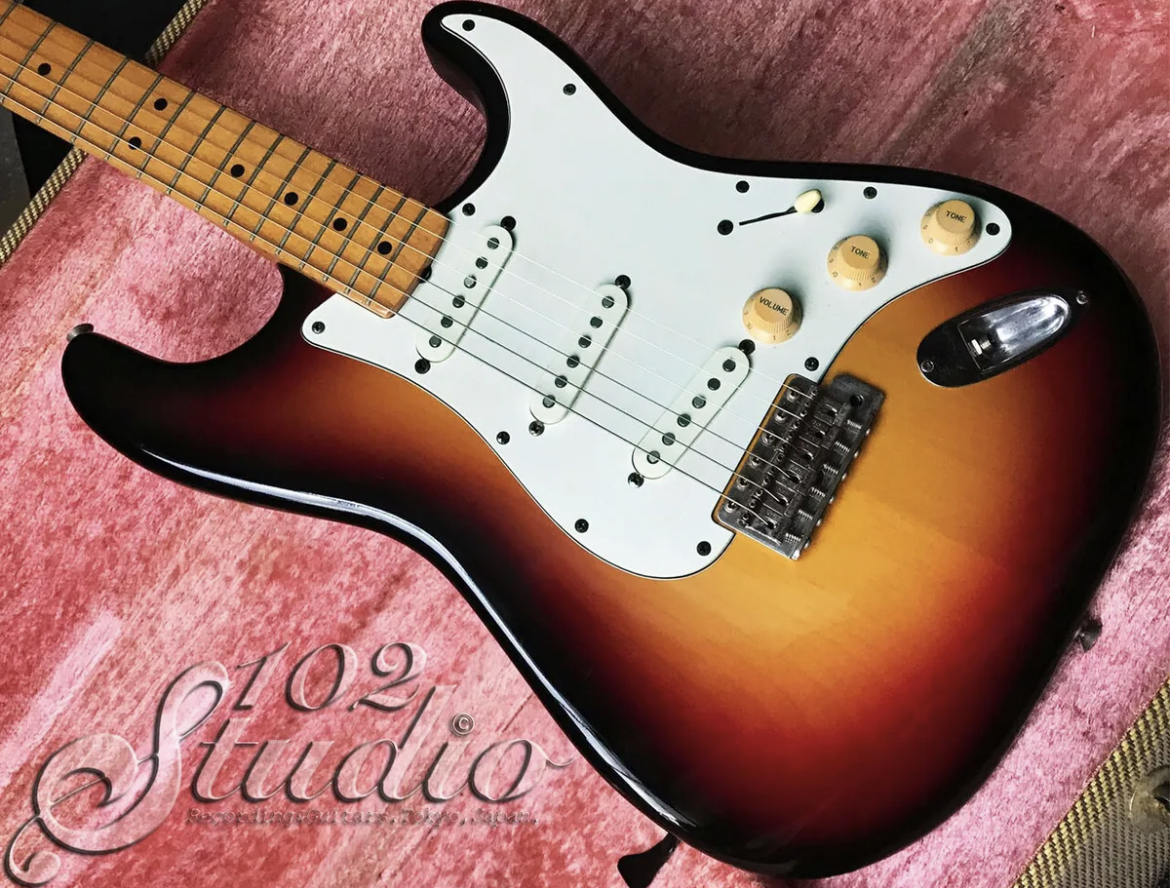
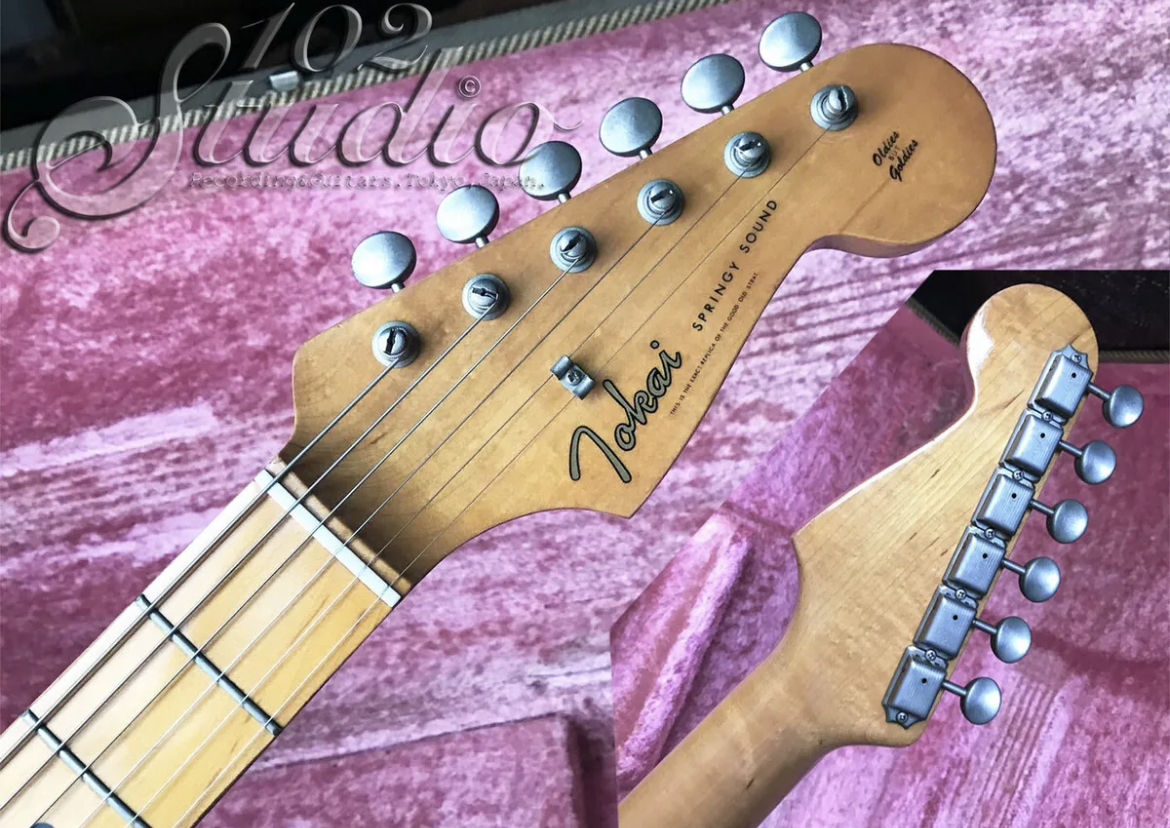
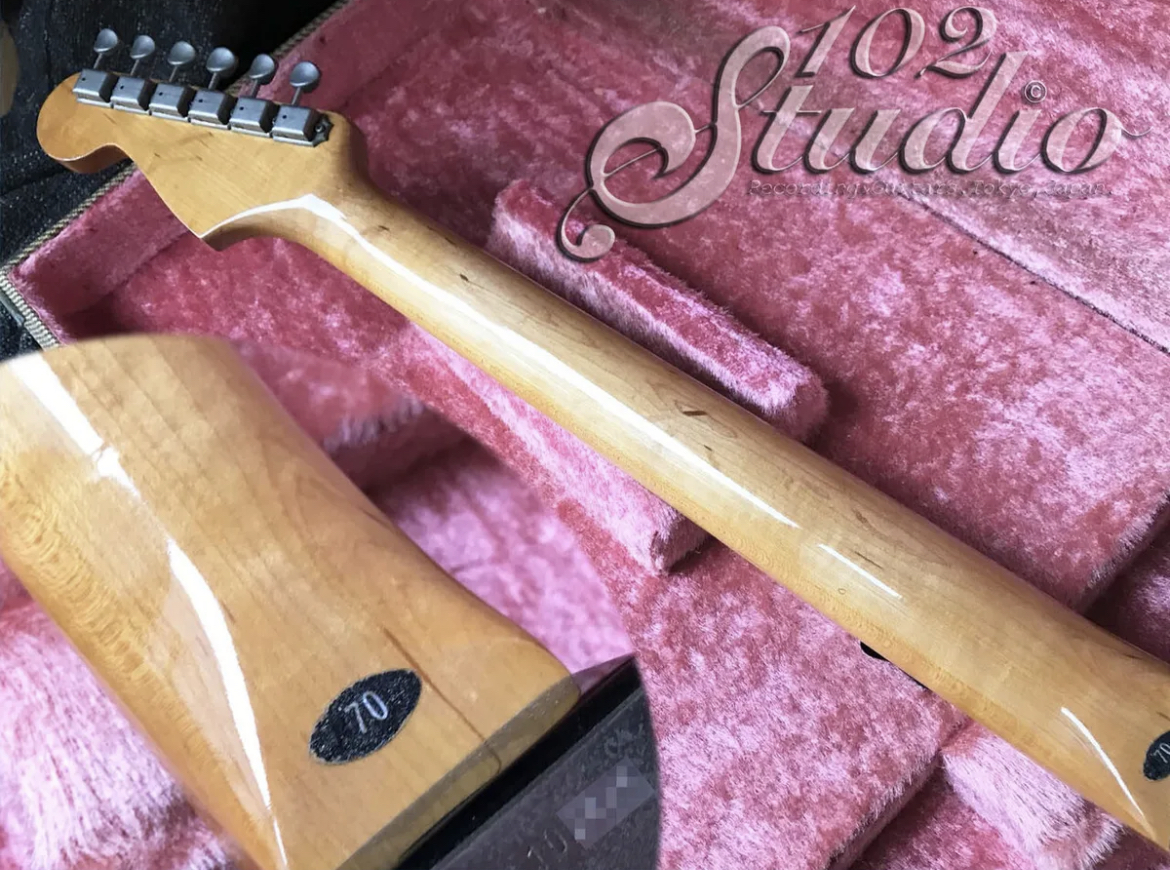
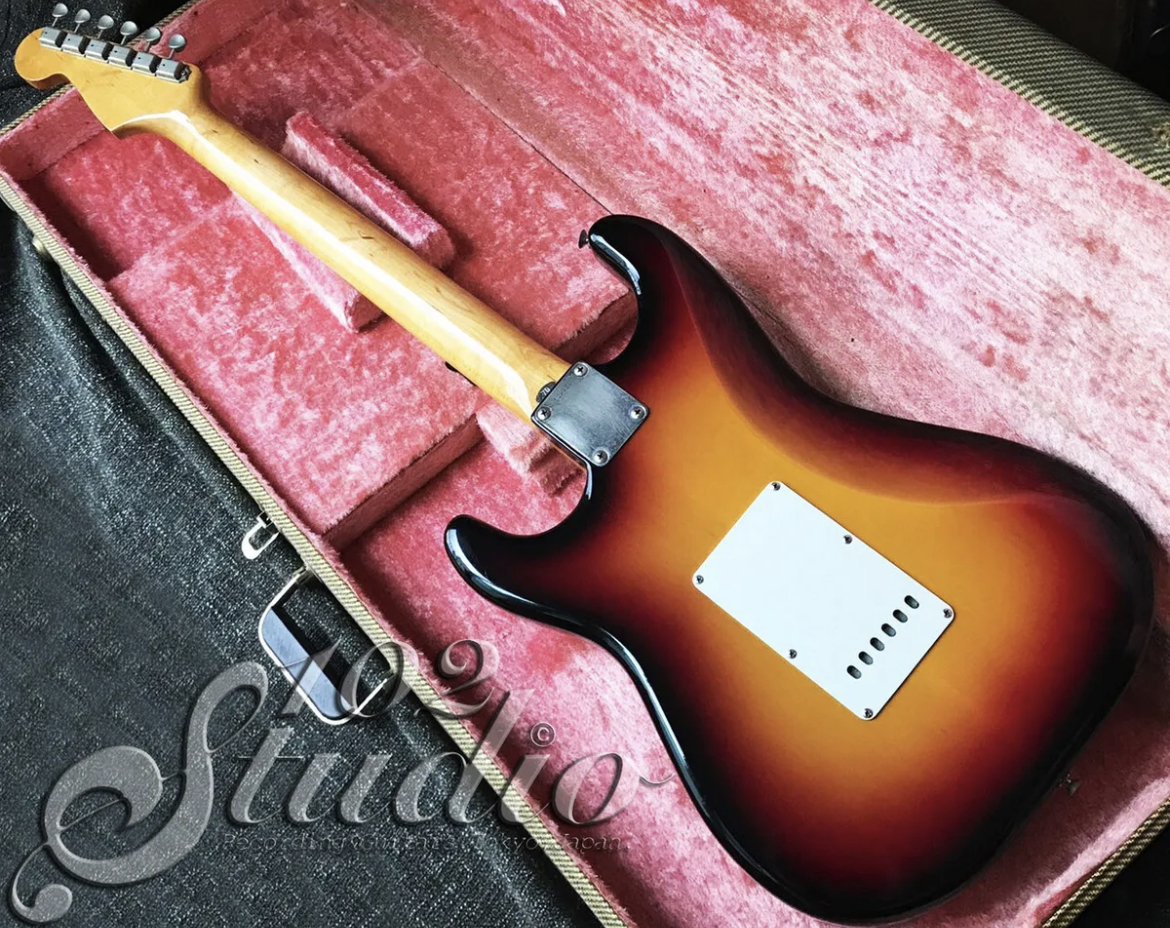
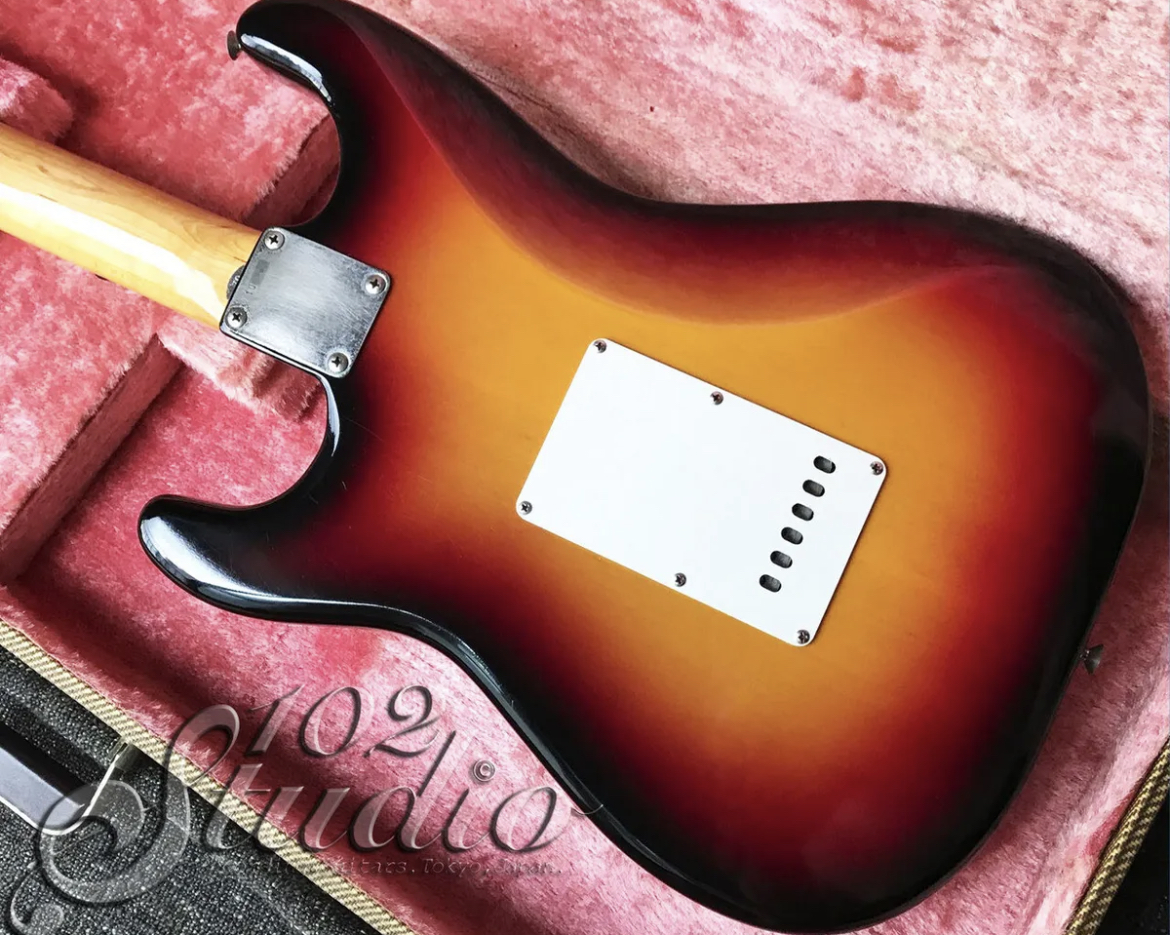
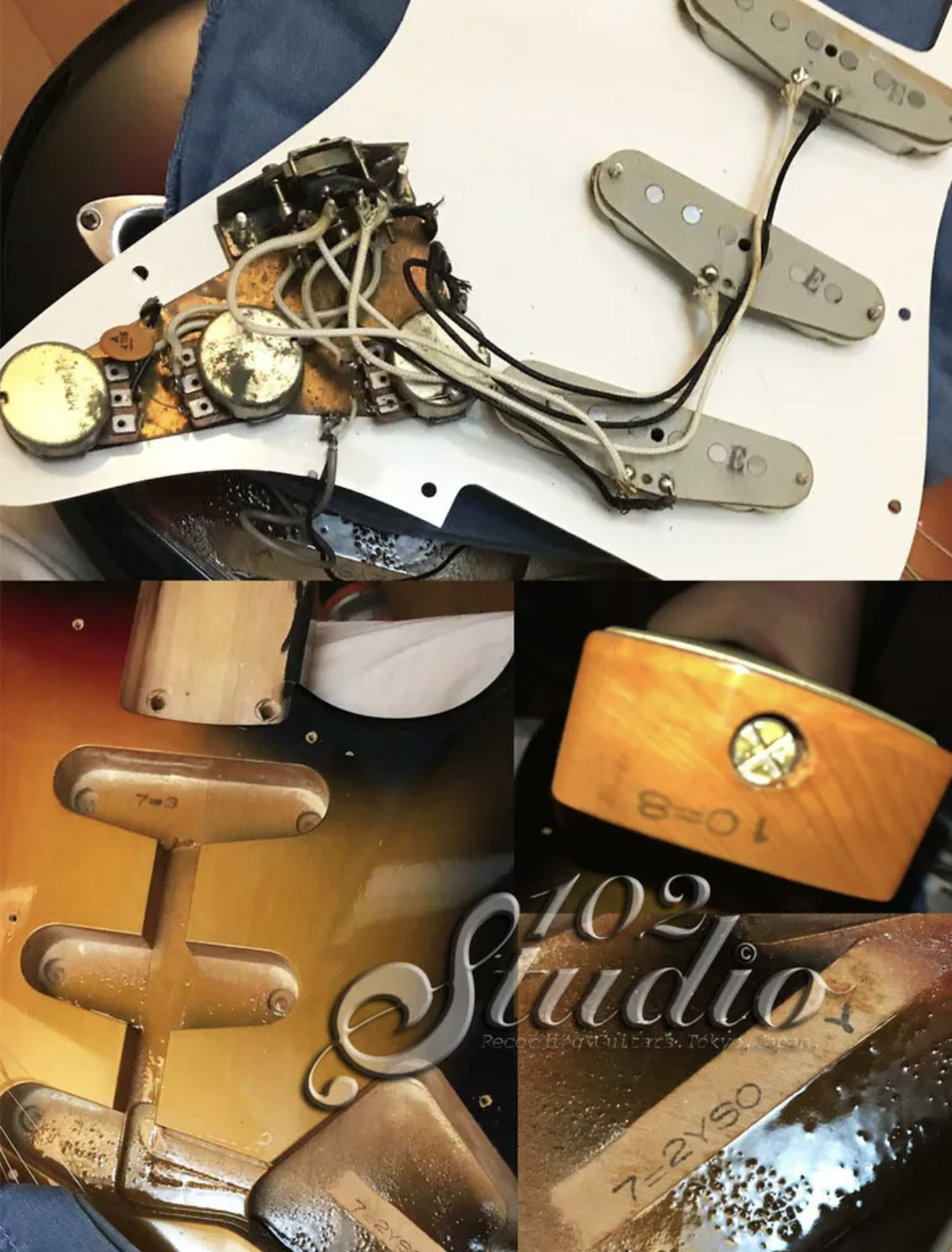
Will be interesting to see what happens with it.
Three different production codes?? 7=2, 7=3 and 10=8....
https://www.ebay.com/itm/265738565...b_vTl8uRJe&var=&widget_ver=artemis&media=COPY

Tokai ST70 YS 1981 Maple Cap 64 Paste Maple One of the illusions
Description
Once every 10 years, one of the phantoms of the class has arrived in miraculous conditions!
The one in stock this time is ...
TOKAI 1981 ST70YS
As for the Spa Logo TOKAI period, only one year in 1982 is listed in the catalog, and many people may not know this existence.
Please note that it is not just a maple cap!
In vintage fenders, the pasted maple fingerboard, which is also famous as a Jimihen specification, existed as an optional setting in the mid to late 1960s, and the maple fingerboard is attached to the maple neck in the same way as the rose fingerboard is attached to the maple neck. Together, it is called a maple cap in the English-speaking world.
The maple 1-piece neck has a brown wood line that is less than 1 cm wide, which is a lid-like meaning after the truss rod is loaded from the back of the neck. It is a big feature to judge that there is no scank stripe because the rod is charged.
Even in the photo of the end of the fingerboard, you can see that the fingerboard with a thickness of about 6 to 7 mm is attached to the neck. See photo.
As mentioned above, this maple cap is a specification that is often seen in fenders after 1987, but it is extremely rare even in the pre-CBS period, and this product has a motif of an individual in 1964, in addition to the maple cap. The 64ST is reproduced by the sunburst, which is characterized by yellow color, the 11-point stop 3-ply pickguard, and the small head. To make it easier to understand, it's TAKANAKA's favorite machine!
Not only the motif individual, but also the famous strat book The Galaxy of Strats has a maple cap strat made in 1964, but there are very few strats of this specification in the Pre-CBS small head period, which is a ridiculous price now. It is a specification that is traded at.
Even the original Fender took 40 years to release this small head maple cap specification strat on CS, but in 1981 this project was released by Tokai-san. It's a miracle.
However, even if it is listed in the catalog, except for some popular models, let's mass-produce it before mass-ordering! There is no reason to take a high-risk method, and I think there is no doubt that it was basically small-quantity production and additional production while looking at the order back from the dealer.
However, sadly, there are not many people who could understand the wonderful condition of this specification in 1981, as you can see from the fact that even the original fender did not release the C S tiny lot limited release until the 2000s. It was an era when we had to be satisfied with a low-end model that was roughly similar to the one that wasn't there. You can see that the number of sales was very small.
Even if you have a chance to see it on the net very rarely, unfortunately if you look closely, the neck and body do not match, and when you open the pickguard, the xylem counterbore is fierce, etc. Remodeling of the 1980s The individual that remains as it was at the time of its release through the boom is the one that remains in its original state, regardless of the manufacturer's product, 40 years after its release. " Finding it is extremely difficult.
As for the one in stock this time, I didn't feel any excessive feeling of use, and it remained in this state! Extreme beauty condition of the level!
As a vintage gear 41 years ago, it is kept in a very clean state that can be said to be near mint, and although there are some minor wears that can only be found by holding your eyes over the light, first of all, in this condition You can think that it will not come out in the future.
Unless you are interested in a fairly detailed level, you can think of it as the image in the picture!
The neck condition is good, there is room for the remaining frets and rods, and the total instrument condition is outstanding, and the collector's release is valuable because the original condition was maintained. Weight 3.45 kg
In addition, with regard to this product, apart from its rarity, it takes a long time just to continue playing live without plugging in. In many cases, it is captured with a nuance that resonates loudly when it sounds strongly, and of course that is also perfect, but ...
As an example of an element that is difficult to understand just by listening to it, the sound of lightly plucking the 2nd and 3rd strings around the 7th to 12th frets may not usually bother you, but with this guitar, it was very long ago. It comes out and the volume is loud and I am surprised. I tend to listen to the high positive and low positive 1st to 3rd strings that approach with strong picking and choking, and chord playing, but I feel that this guitar is totally ridiculous.
Looking at the back of the neck, in addition to the fact that it is a hard hard maple mixed with fleck to the tip of the head, it appears in the sound more than it looks, and the acoustic sound is clear about the body, both the body and the neck. Great sound.
Of course, E-stamp PU is also good, but I think that this raw sound is what makes the amp sound.
In addition to using good materials from the beginning, seasoning over 40 years, and very important decades of good management, the sound created by all the elements, I play it. It's a guitar that you can really feel.
In addition to the fact that it was made in 1981, the year before the release in 1982, the paint is thin, and if this workmanship is taken into consideration, the possibility of a proto before the release cannot be denied.
If you have been looking for this product for a long time, it is a carefully selected individual that can be asserted that it is difficult to get the product with this quality in the future because it is a collector's release product, so please do not miss this timing!







Here are the ST70s I have seen. Let me know if you have seen others and I will add them to the list.
ST70 "1964 Rare Model" with maple board:
1980 ST70 BB Springy (FB) ??
1981 ST70 FO Springy (leadguitar_323)
1981 ST70 YS Springy (eBay)
198? ST70 YS Goldstar (Koubayashi)
1984 ST70 YS Goldstar (Sigmania)
ST70R "1960 Model" with rosewood slab board:
1981 ST70R YS (Flikr-Myxi2)
1981 ST70R YS (eBay)
1981 ST70R YS (BPJensen)
1981 ST70R YS (Peter Mac provided)
1981 ST75R MG (sigmania)
1982 ST70R BB (eBay)
ST70 "1964 Rare Model" with maple board:
1980 ST70 BB Springy (FB) ??
1981 ST70 FO Springy (leadguitar_323)
1981 ST70 YS Springy (eBay)
198? ST70 YS Goldstar (Koubayashi)
1984 ST70 YS Goldstar (Sigmania)
ST70R "1960 Model" with rosewood slab board:
1981 ST70R YS (Flikr-Myxi2)
1981 ST70R YS (eBay)
1981 ST70R YS (BPJensen)
1981 ST70R YS (Peter Mac provided)
1981 ST75R MG (sigmania)
1982 ST70R BB (eBay)
Peter Mac
Well-known member
Hi guys,
Just to upgrade the post these are the specs for the ST-70 guitars I have actual photos and dates listed - not to be confused with ST-70S ( an entirely different Model)
1024145 12=3 OW X ST-70
1024205 12=9 YSO X ST-70R
1024238 12=3 FO X ST-70
There are a couple more but with no details or serial numbers so I cannot confirm them.
These 3 I can. Look at the matching body stamps as the neck stamps match them.
All 3 are December build, all 3 end with 'X', all 3 have 1024xxx serial numbers and all 3 are a different colour.
I have found most consistantly that from 1981, ST-50 bodies tend to end with 'Z', ST-60 with 'X' and ST-80-up with 'A' [also stamped on the neck]
To my mind, the ST-70 was an upgraded ST-60, which seems to be a theme with Tokai at the time, hell the ST-70S had 2 different serial numbers and a painted headstock.
regards
Peter Mac
Just to upgrade the post these are the specs for the ST-70 guitars I have actual photos and dates listed - not to be confused with ST-70S ( an entirely different Model)
1024145 12=3 OW X ST-70
1024205 12=9 YSO X ST-70R
1024238 12=3 FO X ST-70
There are a couple more but with no details or serial numbers so I cannot confirm them.
These 3 I can. Look at the matching body stamps as the neck stamps match them.
All 3 are December build, all 3 end with 'X', all 3 have 1024xxx serial numbers and all 3 are a different colour.
I have found most consistantly that from 1981, ST-50 bodies tend to end with 'Z', ST-60 with 'X' and ST-80-up with 'A' [also stamped on the neck]
To my mind, the ST-70 was an upgraded ST-60, which seems to be a theme with Tokai at the time, hell the ST-70S had 2 different serial numbers and a painted headstock.
regards
Peter Mac
Thanks Peter!
So the FO is the one that leadguitar_323 had.
The YSO is likely the one you showed me a picture of that I referenced.
The OW I have never seen... Wow! Do you have a picture? 8)
And that makes sense about the ST60 bodies.
And my ST70R MG is serial number 1024448
So the FO is the one that leadguitar_323 had.
The YSO is likely the one you showed me a picture of that I referenced.
The OW I have never seen... Wow! Do you have a picture? 8)
And that makes sense about the ST60 bodies.
And my ST70R MG is serial number 1024448
Updated tally with any known serial numbers.
ST70 "1964 Rare Model" with maple board:
1980 ST70 BB Springy S/N 0012993 (FB)
1981 ST70 FO Springy S/N 1024238 (leadguitar_323)
1981 ST70 YS Springy S/N 10XXXXX (eBay)
1981 ST70 OW Springy S/N 1024145 (Peter Mac provided)
198? ST70 YS Goldstar (Koubayashi)
1984 TST70 YS Goldstar S/N 107628 (Sigmania)
ST70R "1960 Model" with rosewood slab board:
1981 ST70R YS (Flikr-Myxi2)
1981 ST70R YS (eBay)
1981 ST70R YS (BPJensen)
1981 ST70R YS S/N 1024205 (Peter Mac provided)
1981 ST75R MG S/N 1024448 (sigmania)
1982 ST70R BB S/N L00601 (eBay)
ST70 "1964 Rare Model" with maple board:
1980 ST70 BB Springy S/N 0012993 (FB)
1981 ST70 FO Springy S/N 1024238 (leadguitar_323)
1981 ST70 YS Springy S/N 10XXXXX (eBay)
1981 ST70 OW Springy S/N 1024145 (Peter Mac provided)
198? ST70 YS Goldstar (Koubayashi)
1984 TST70 YS Goldstar S/N 107628 (Sigmania)
ST70R "1960 Model" with rosewood slab board:
1981 ST70R YS (Flikr-Myxi2)
1981 ST70R YS (eBay)
1981 ST70R YS (BPJensen)
1981 ST70R YS S/N 1024205 (Peter Mac provided)
1981 ST75R MG S/N 1024448 (sigmania)
1982 ST70R BB S/N L00601 (eBay)
And this ST70R Springy has an L serial number using the Fender style serial number system. Likely a 1982 guitar since it has a spaghetti logo.
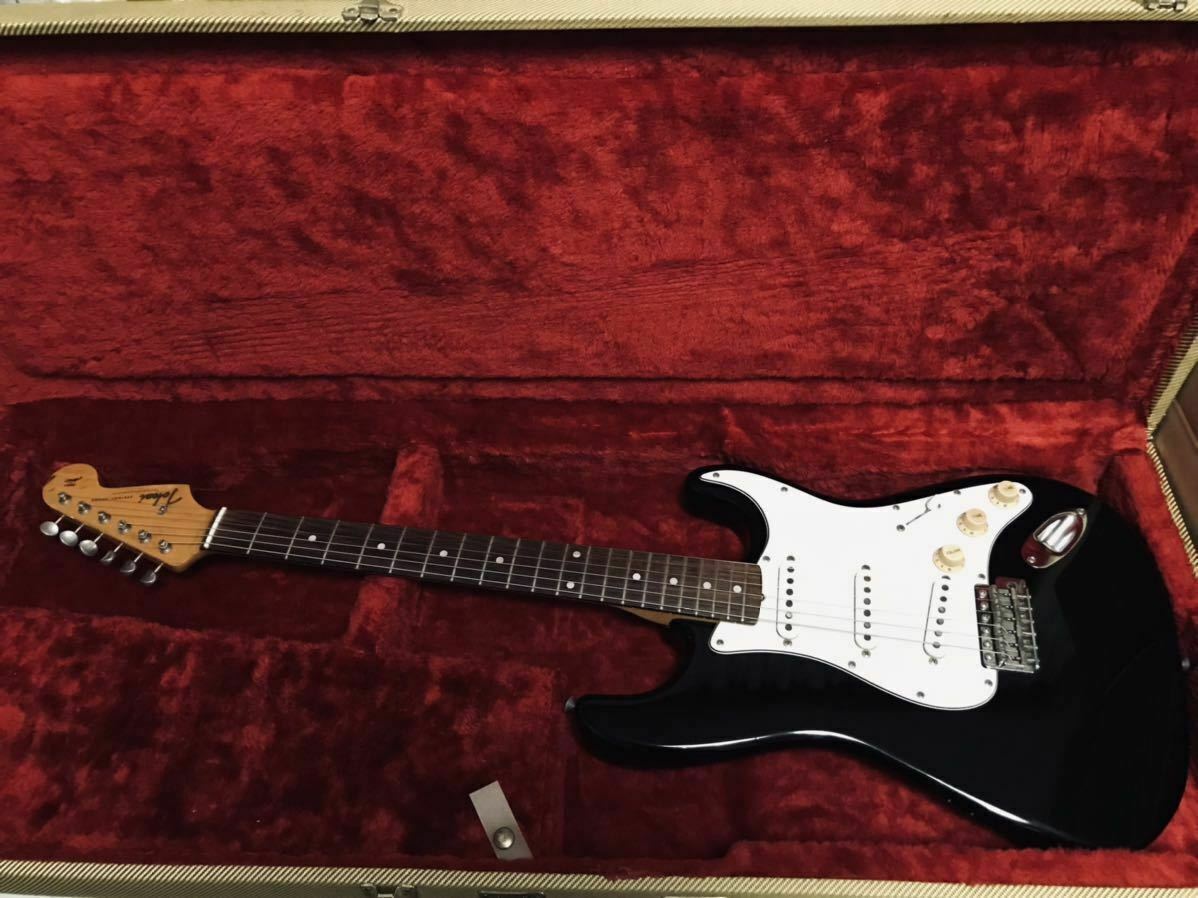
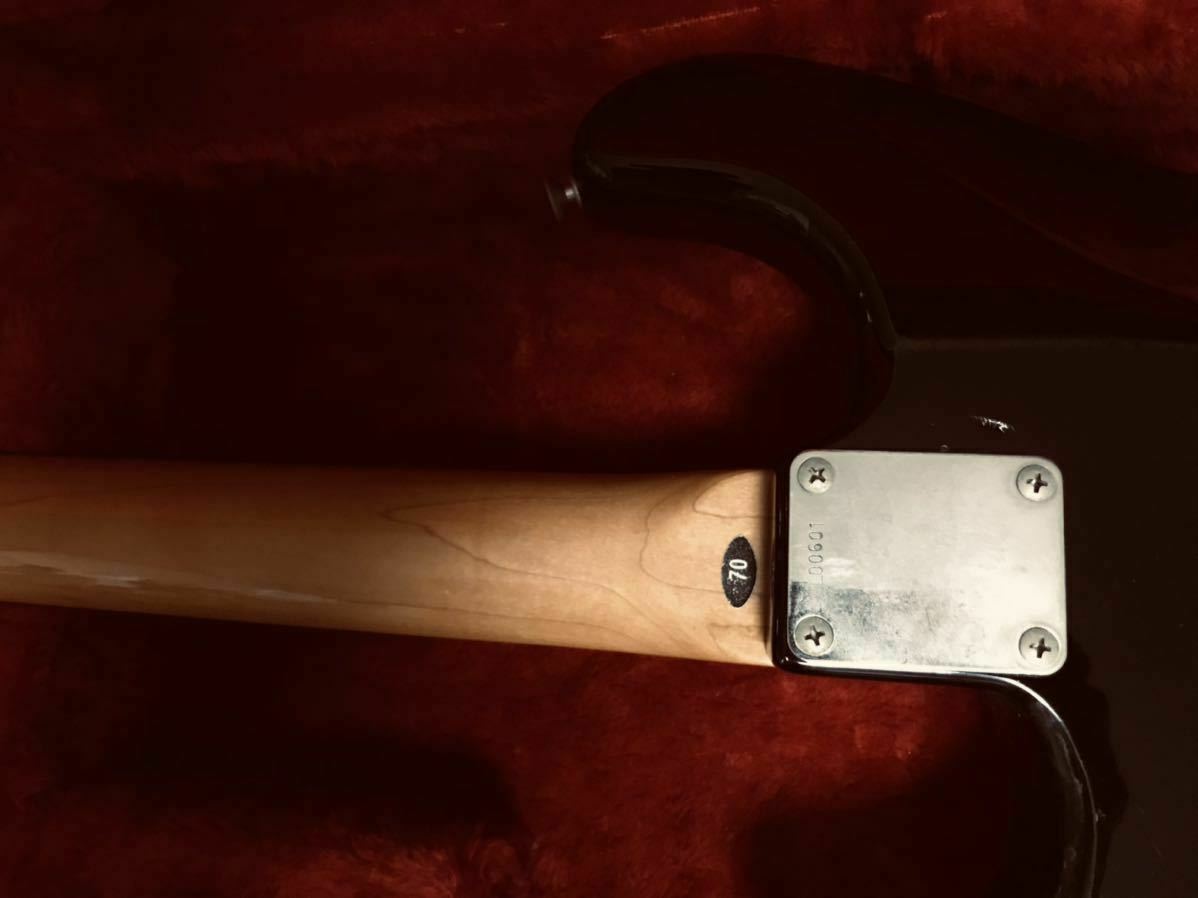
https://www.ebay.com/itm/Rare-1982...2349624.m46890.l49286&mkrid=711-127632-2357-0
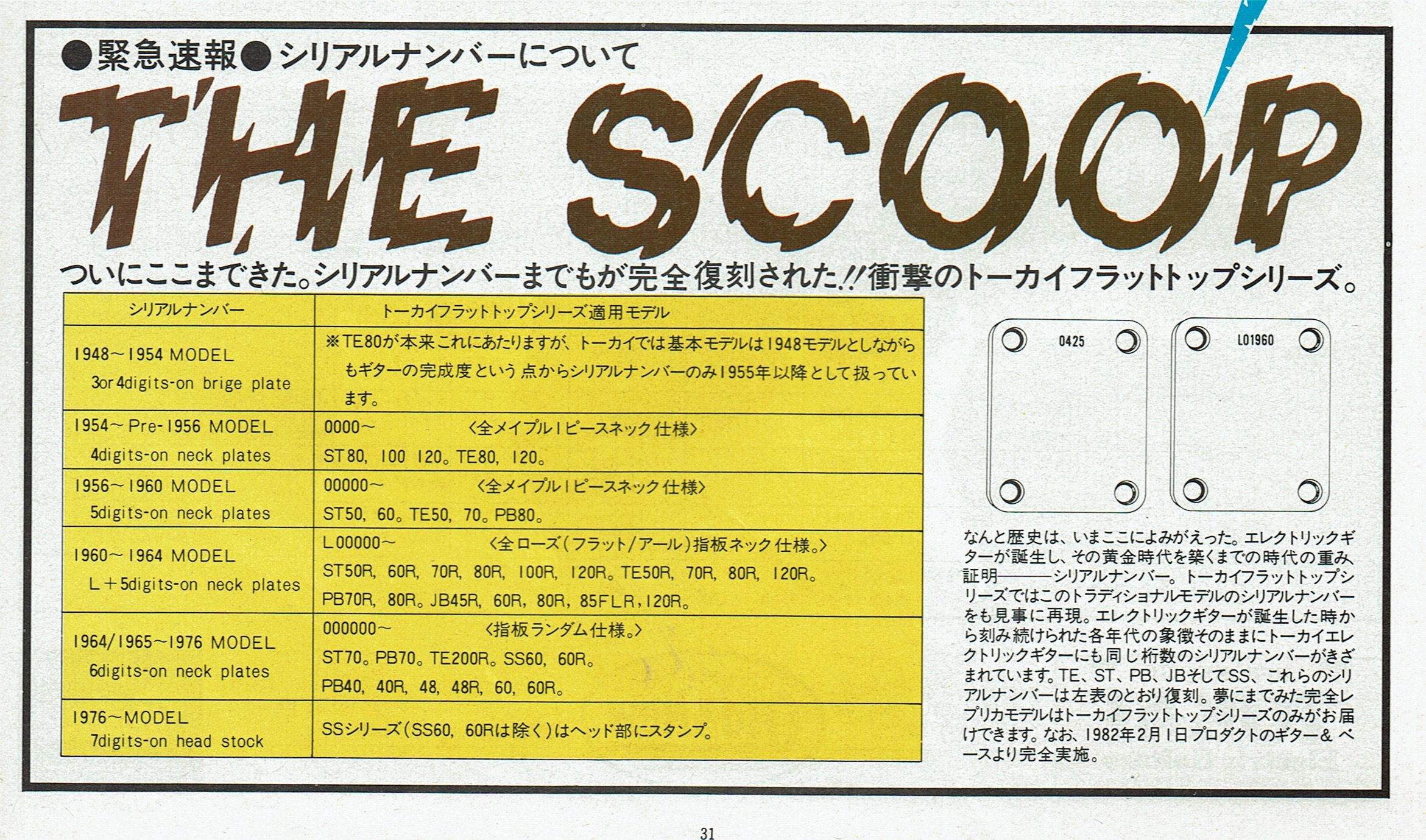


https://www.ebay.com/itm/Rare-1982...2349624.m46890.l49286&mkrid=711-127632-2357-0

FenderDan1
Well-known member
- Joined
- Jul 4, 2022
- Messages
- 69
- Reaction score
- 5
I think In this time, tokai and Fuji supplied necks to each other. If you look at examples of the 1983 SQ “current” model at Fuji you’ll notice that some SQ guitars with a large headstock have a clear veneer board which Fuji DO NOT MAKE, also Dyna Gakki provided necks on short falls in some years for tokai and fender. Look close at examples of the fender japan SQ veneer and slab examples.
Another one just popped up. The 1964 "Rare Model".
SN 107521 ?
I already own one of these s hopefully someone else will buy it before I succumb to the temptation.
https://www.ebay.com/itm/2657677473...b_vTl8uRJe&var=&widget_ver=artemis&media=COPY
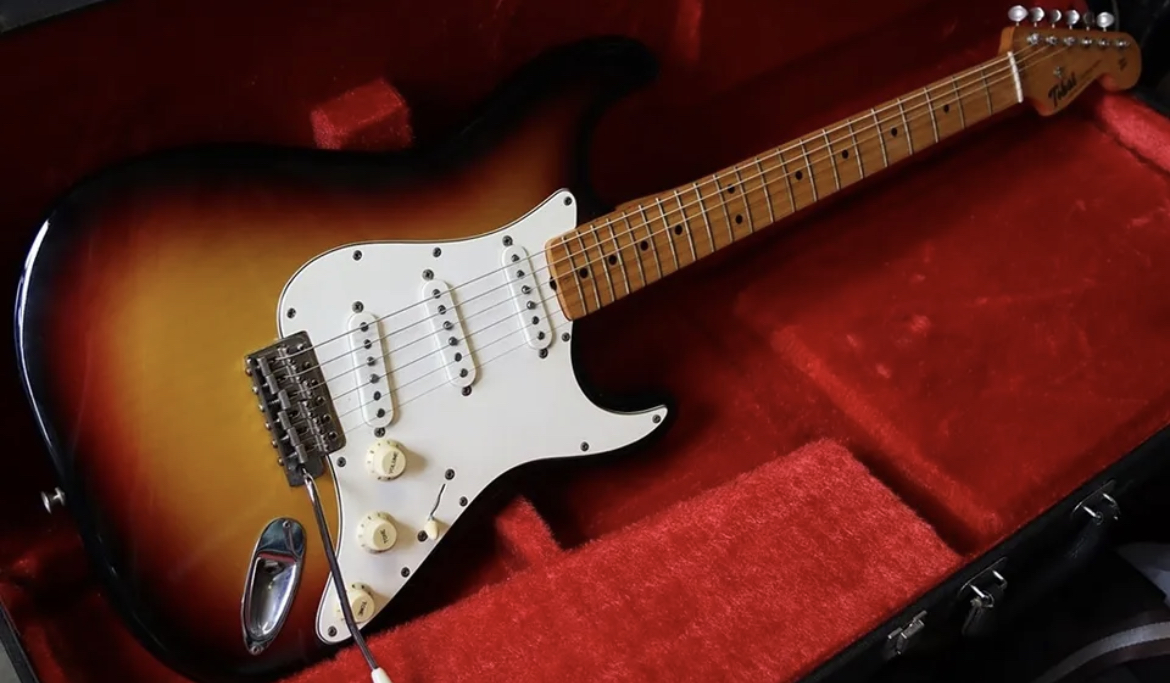
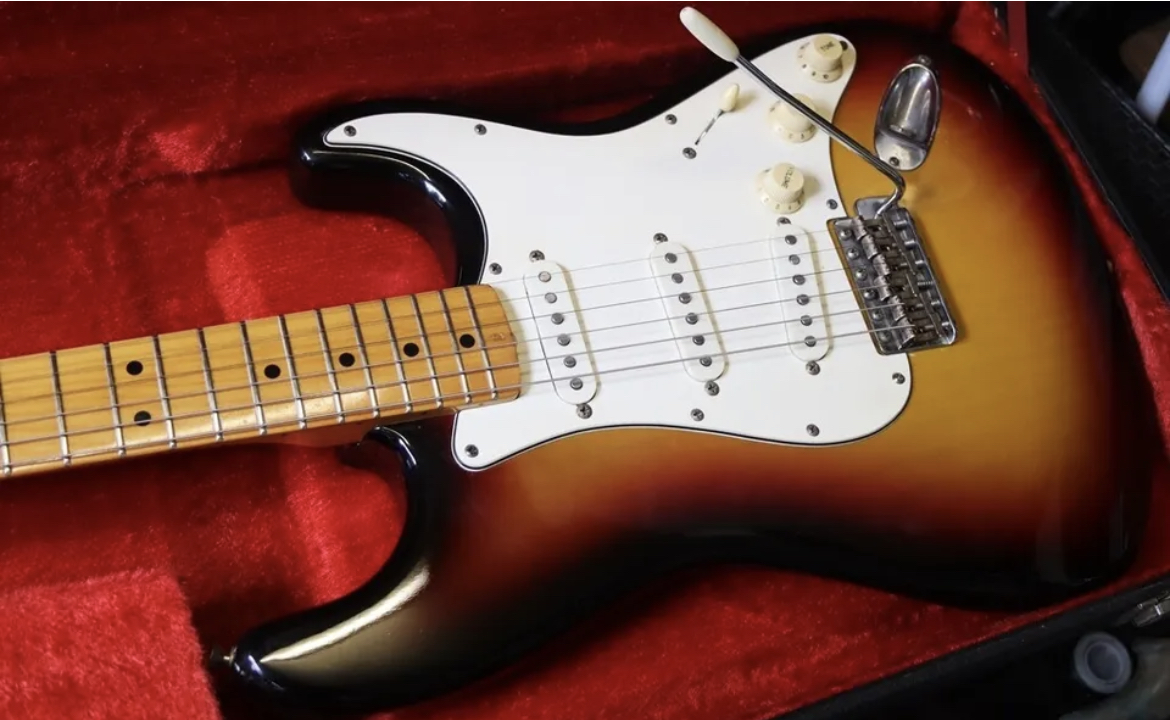
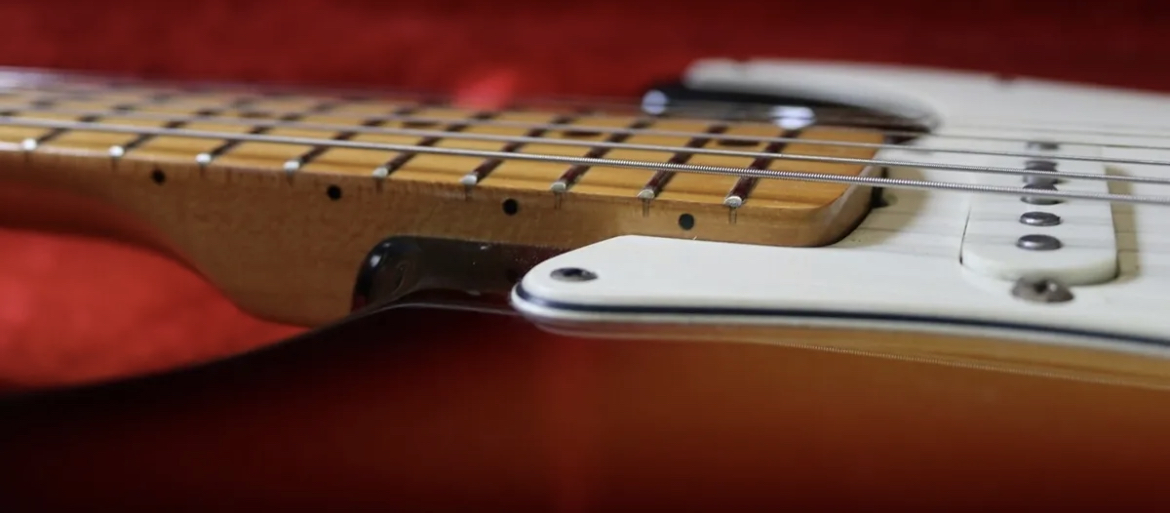
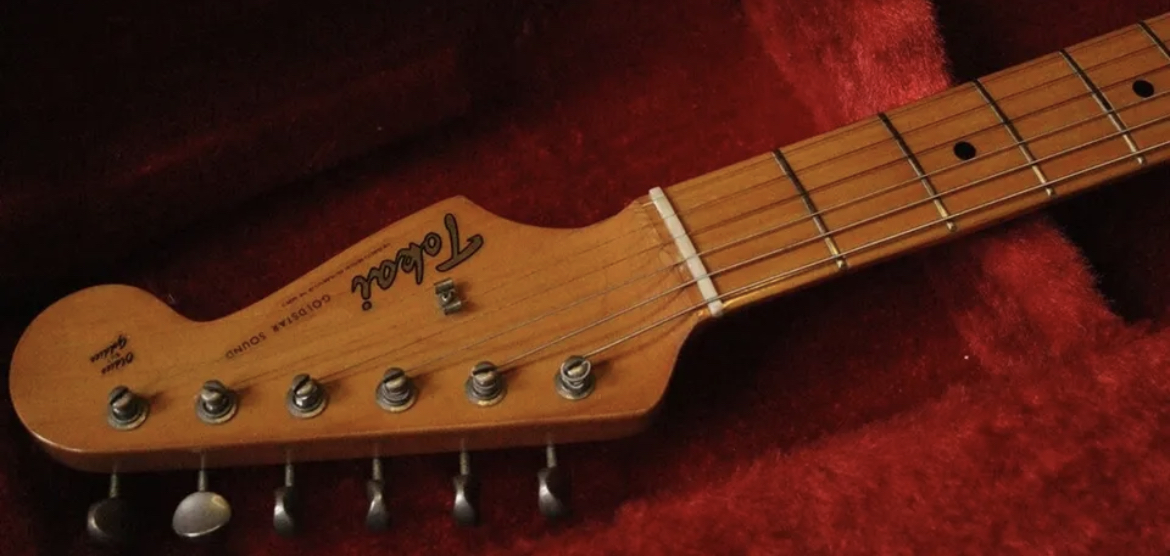
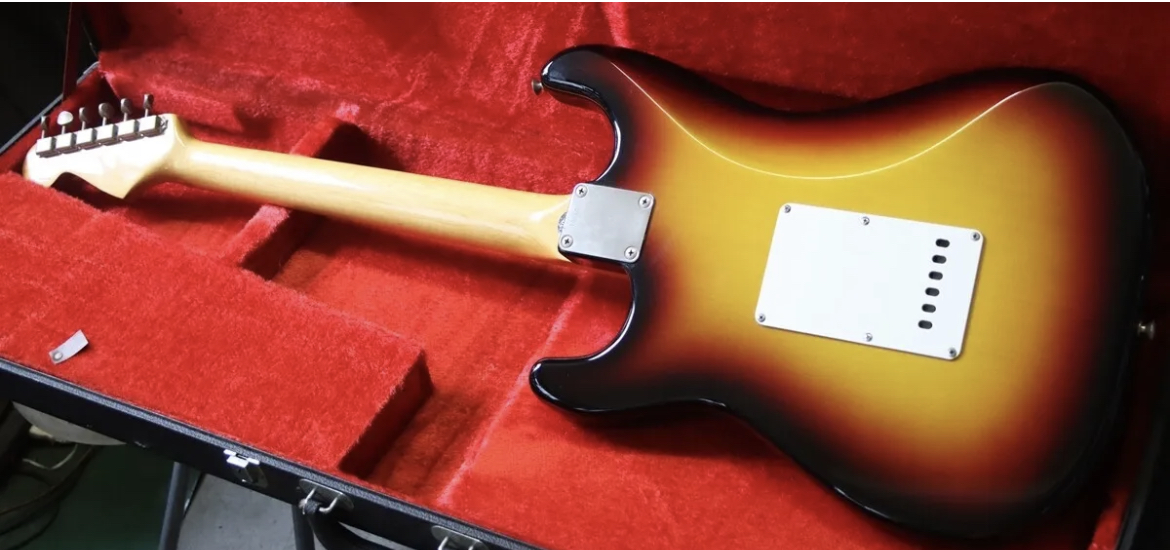
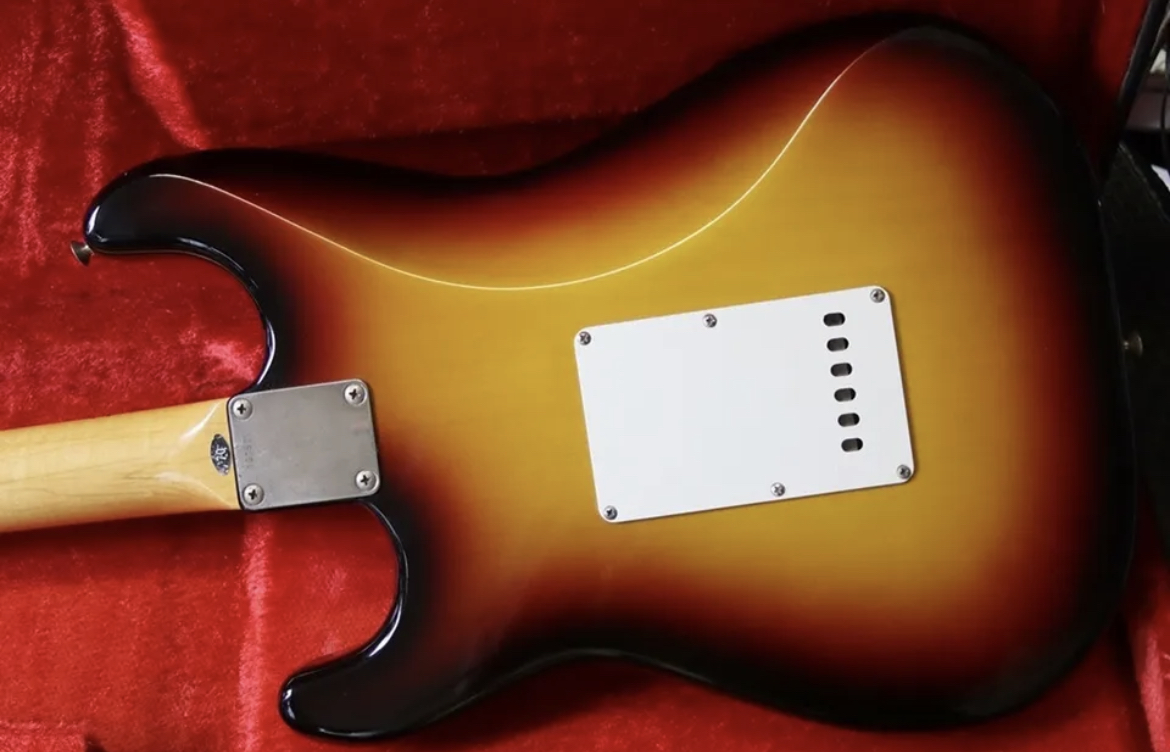

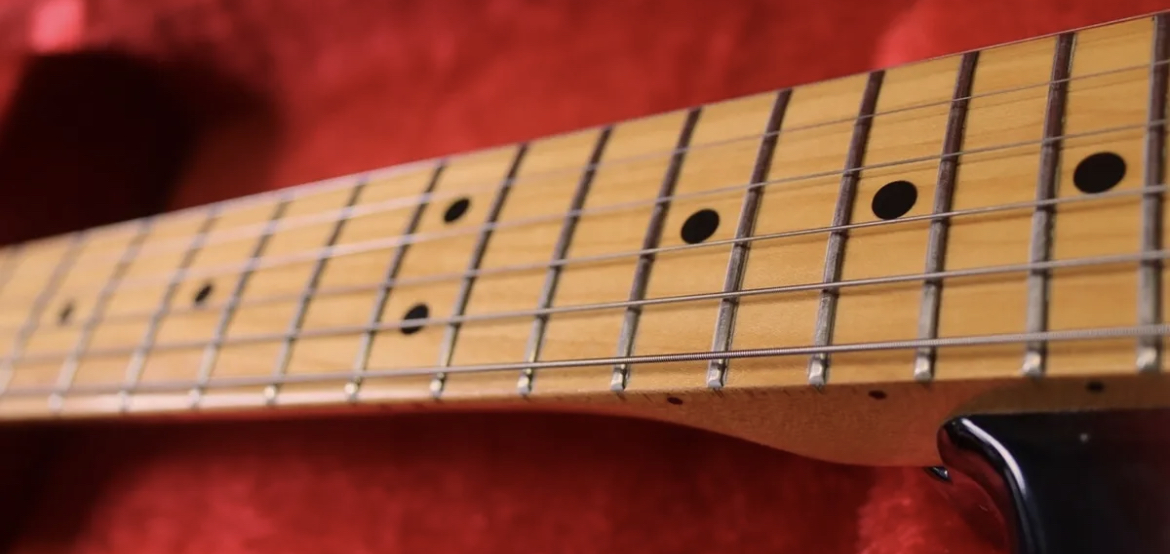
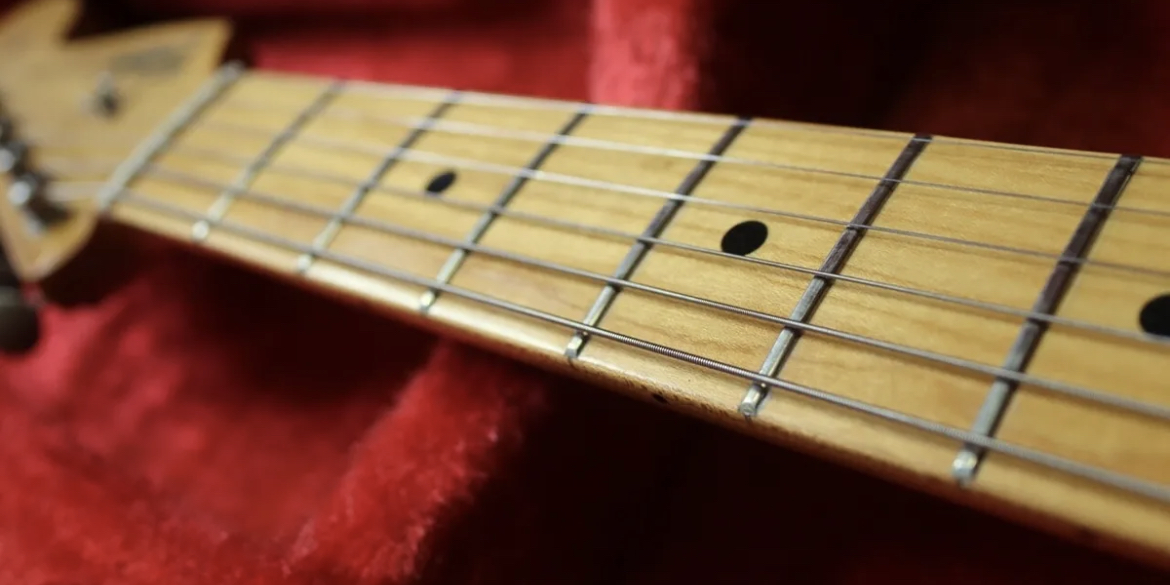
SN 107521 ?
I already own one of these s hopefully someone else will buy it before I succumb to the temptation.
https://www.ebay.com/itm/2657677473...b_vTl8uRJe&var=&widget_ver=artemis&media=COPY









Last edited:
Similar threads
- Replies
- 13
- Views
- 811
- Replies
- 18
- Views
- 1K
- Replies
- 2
- Views
- 453



